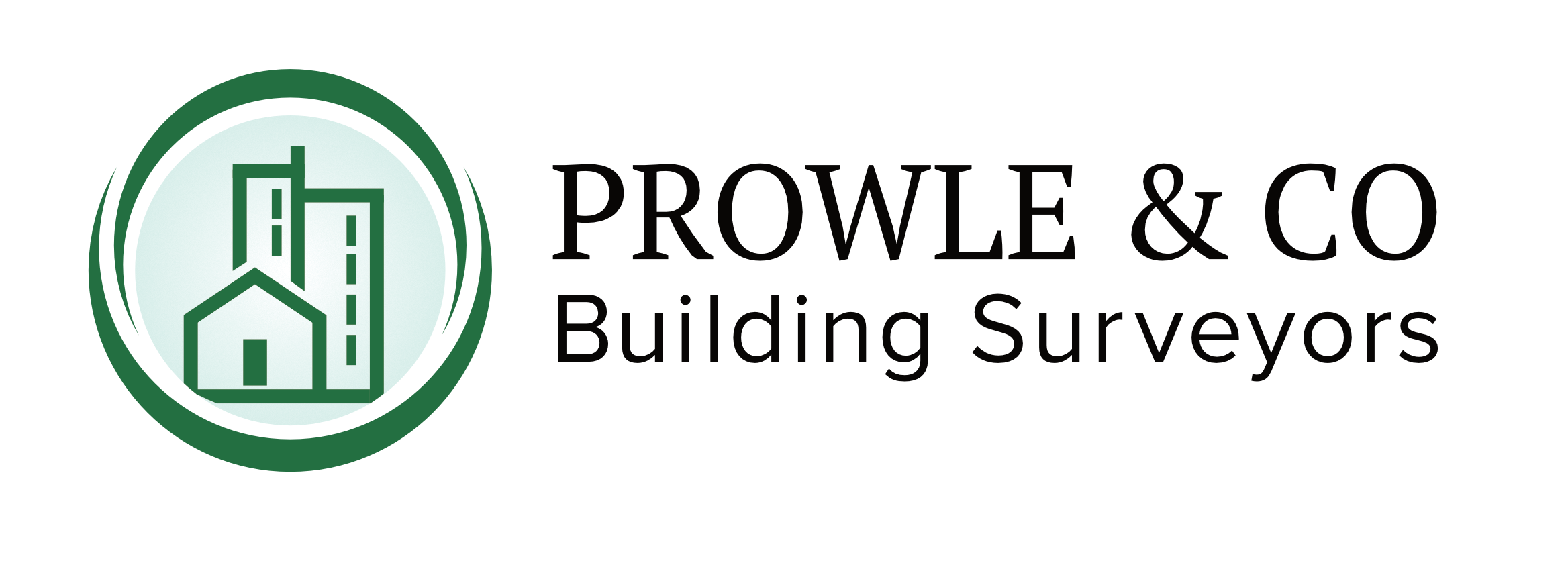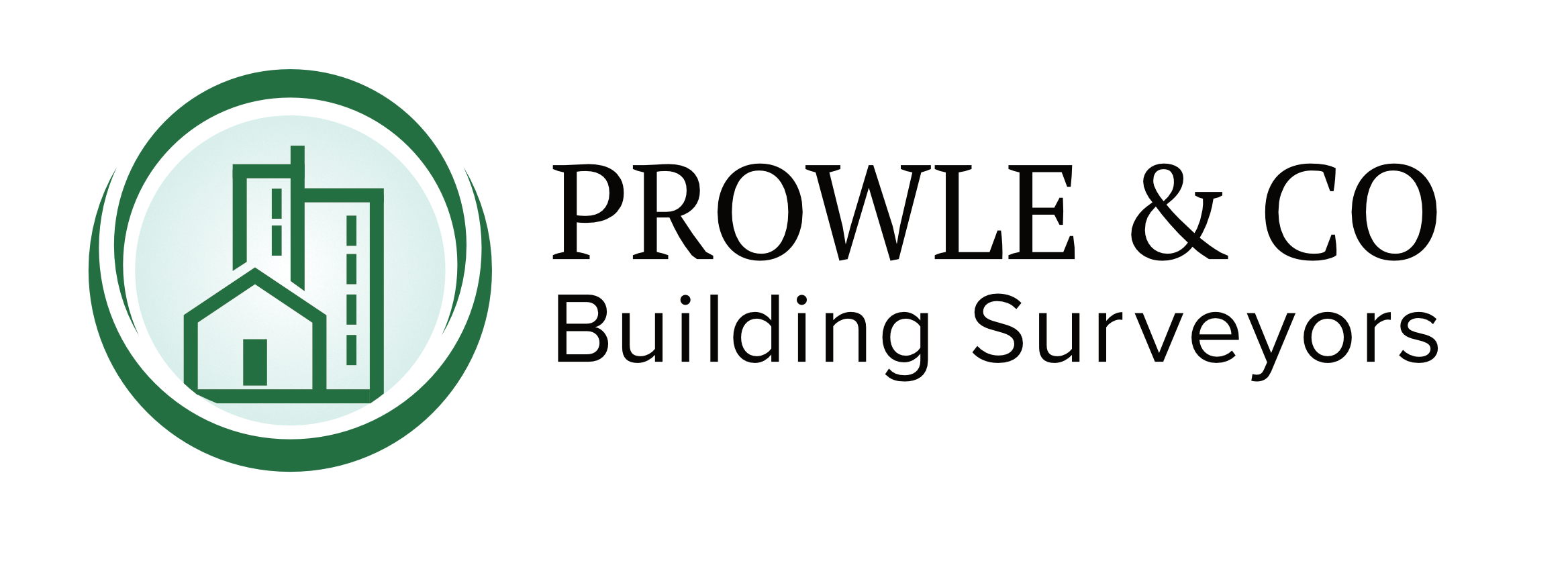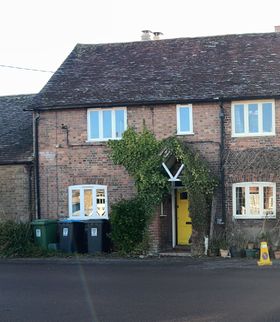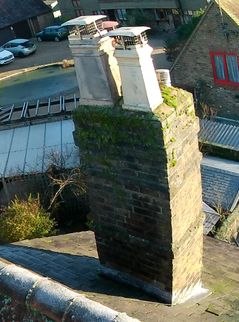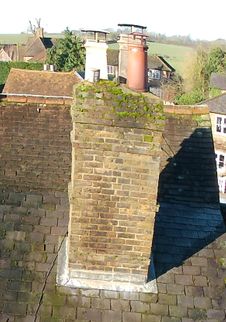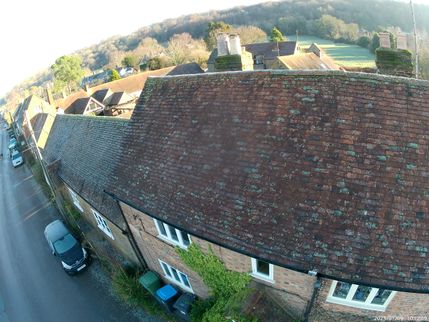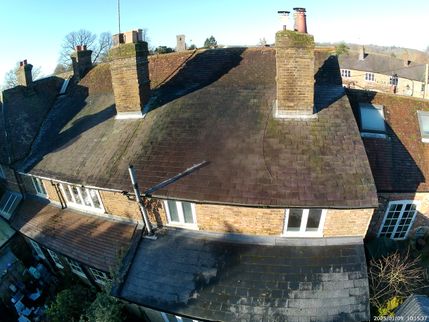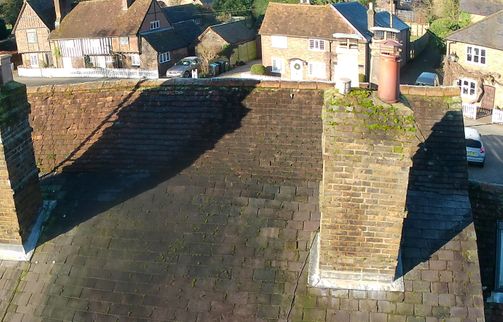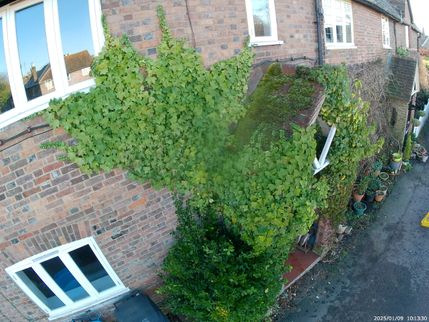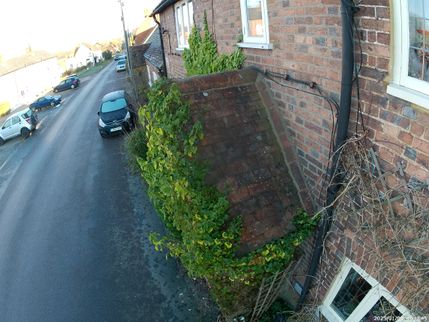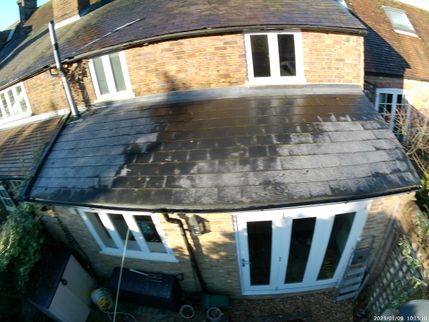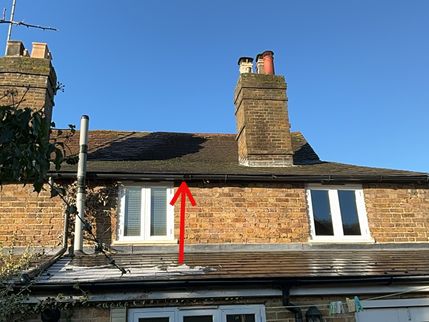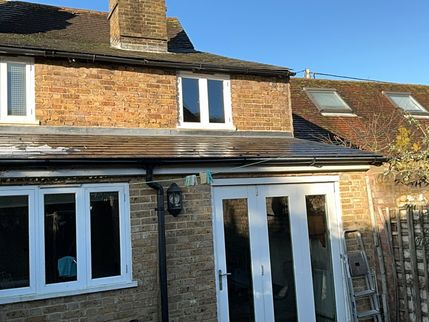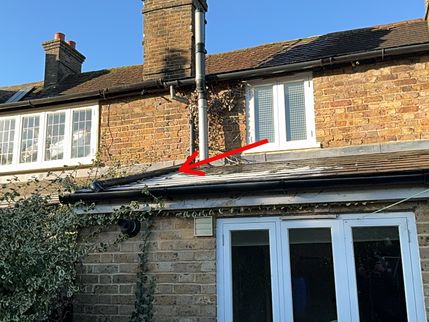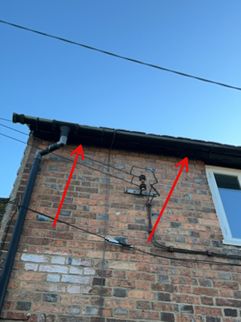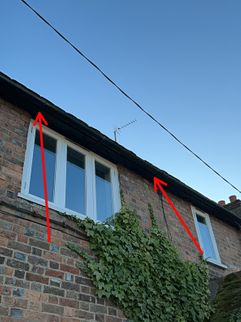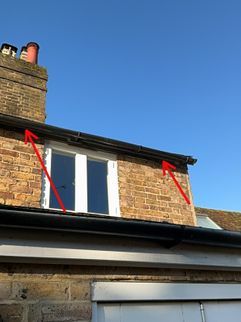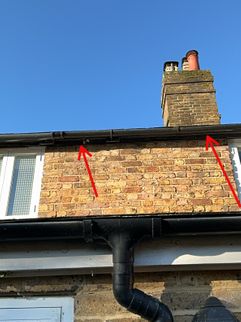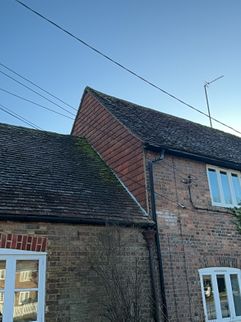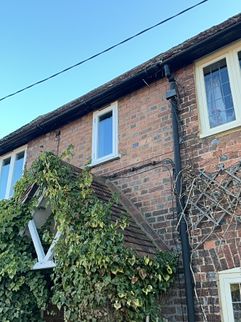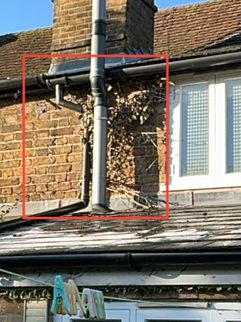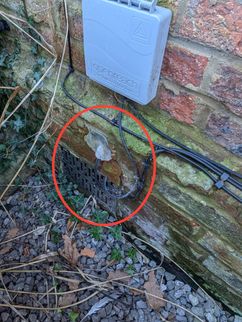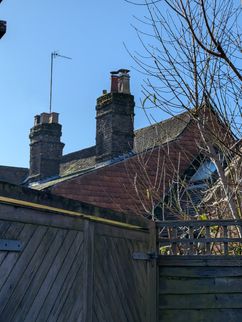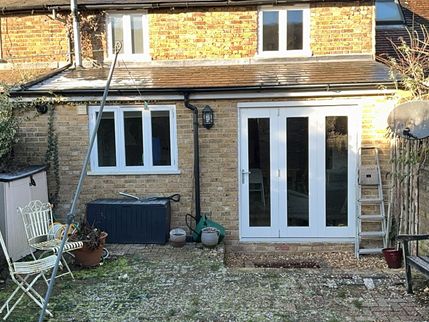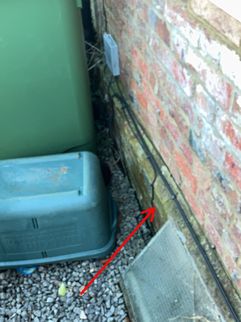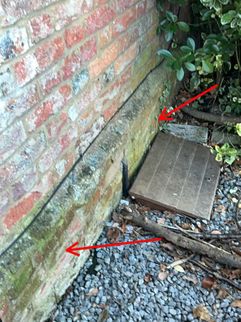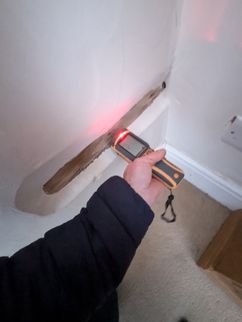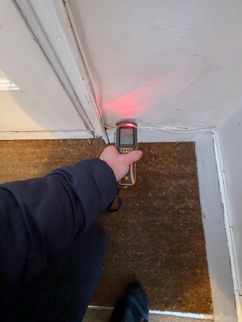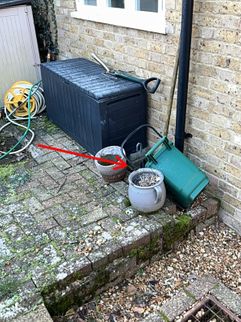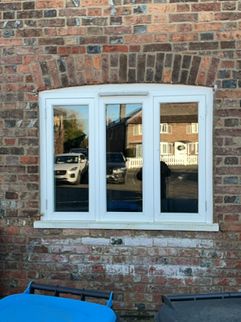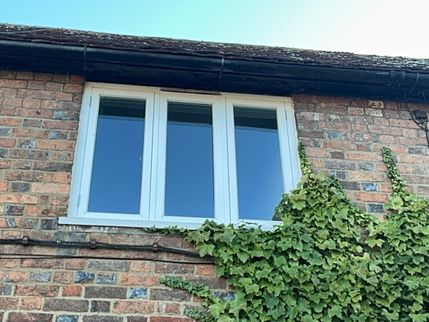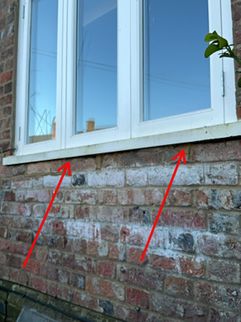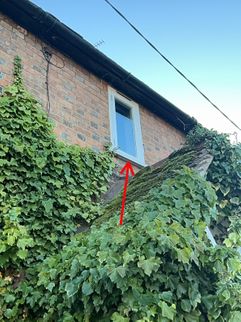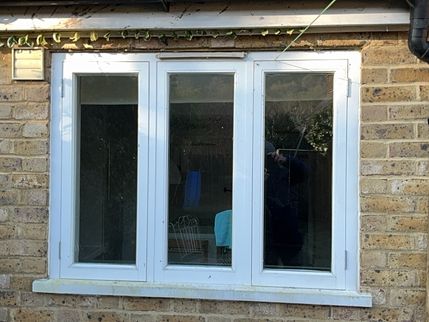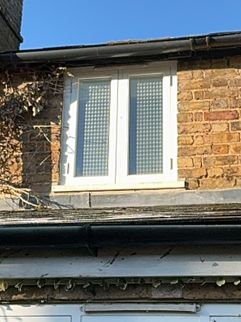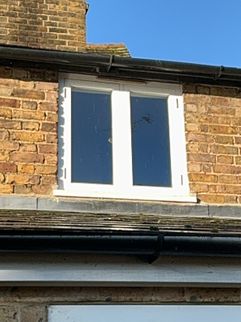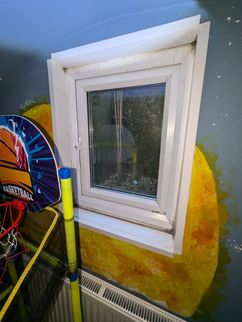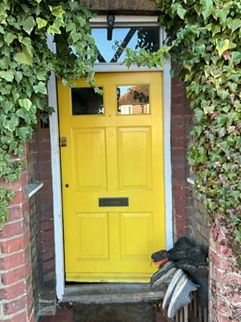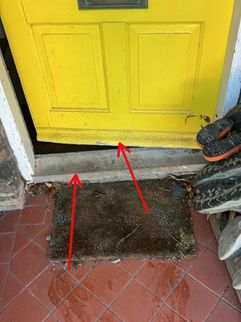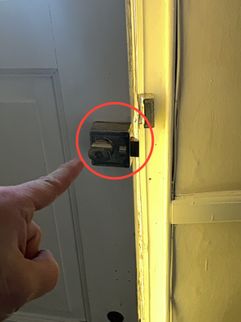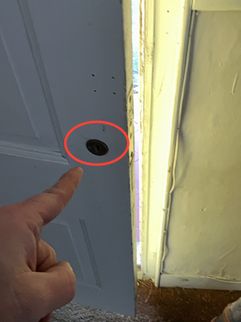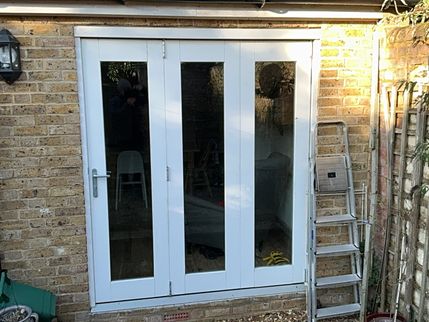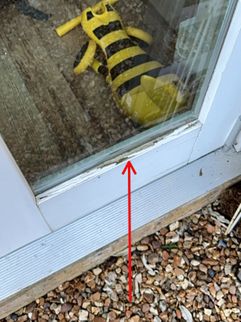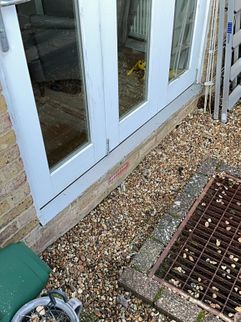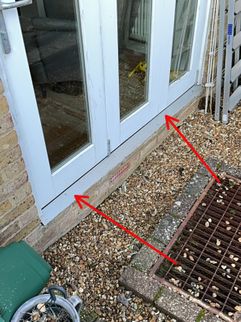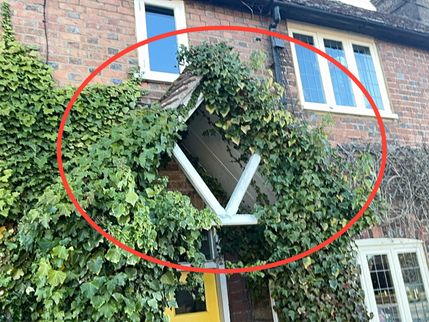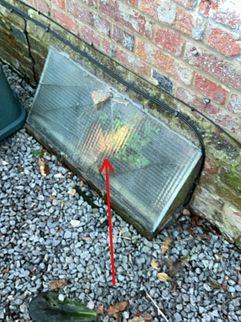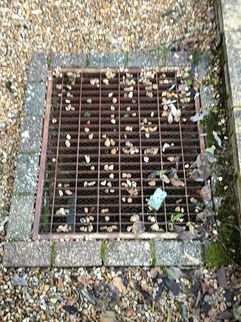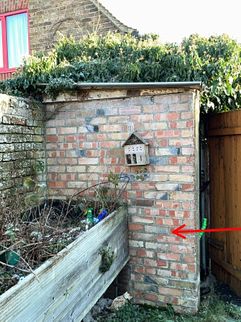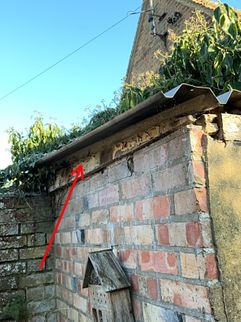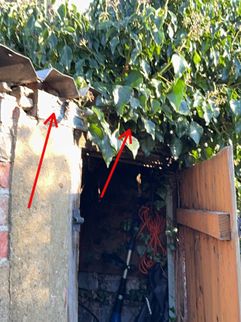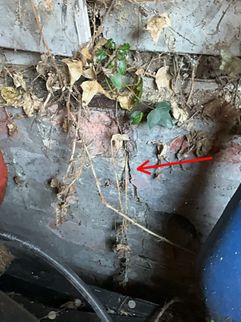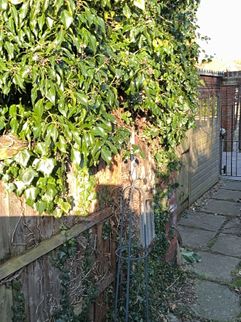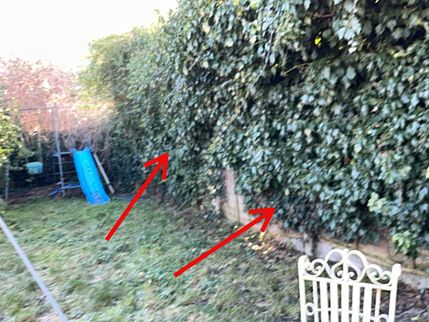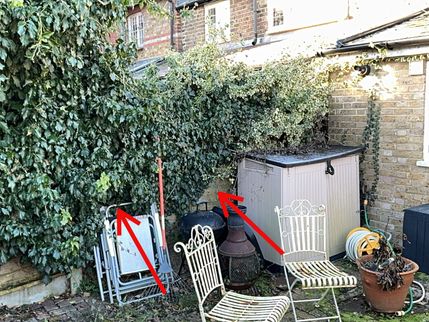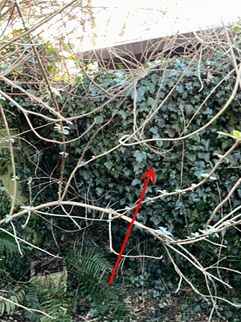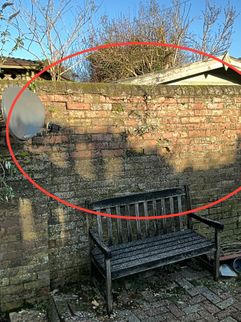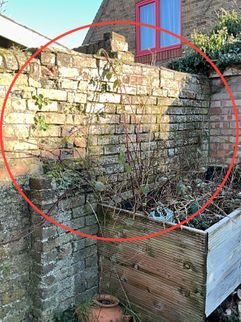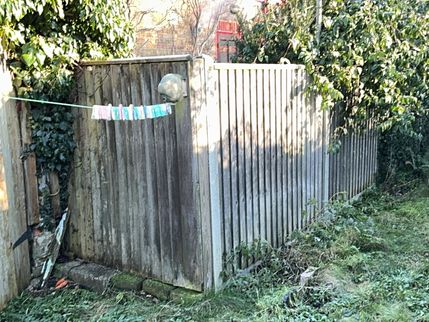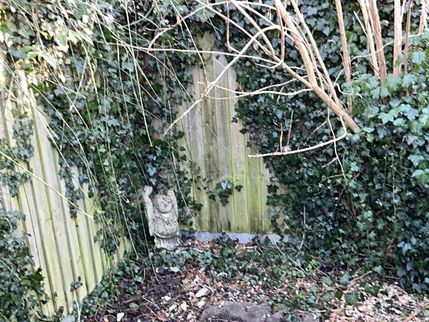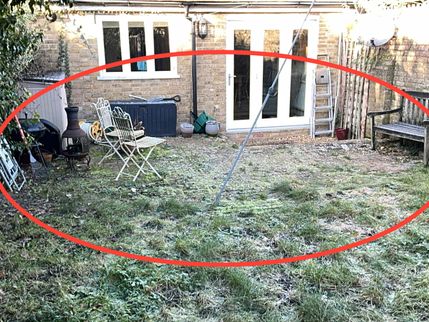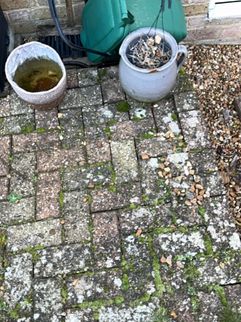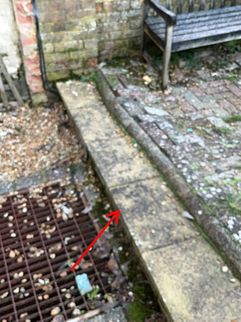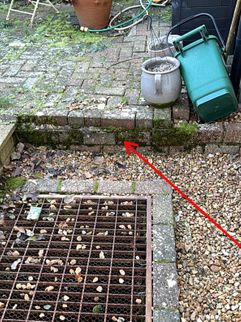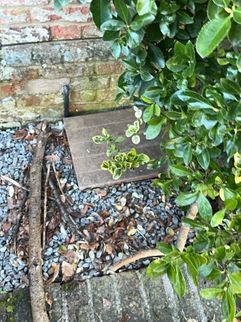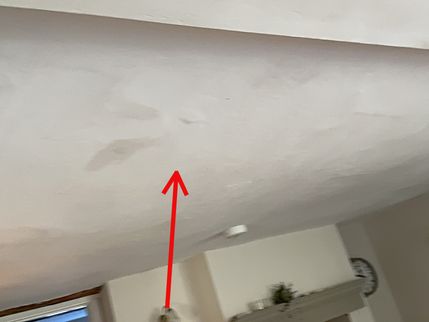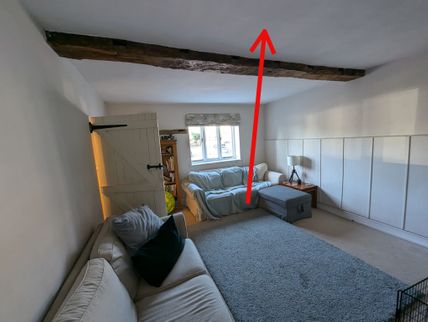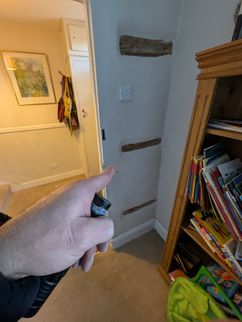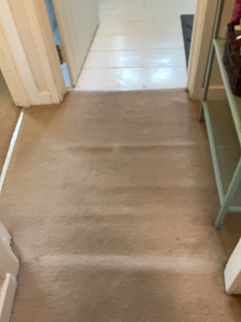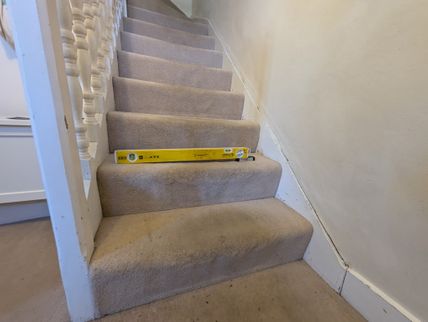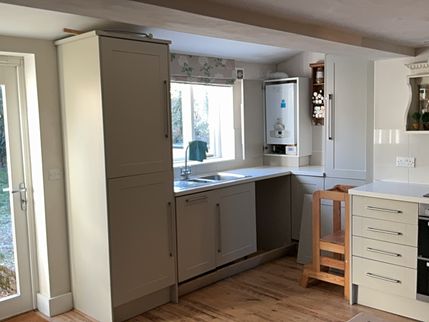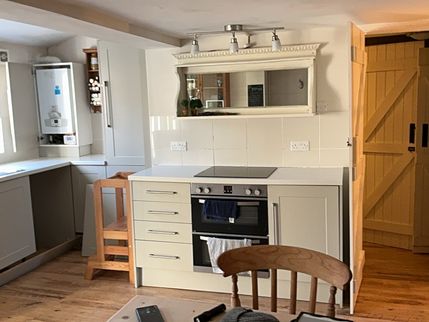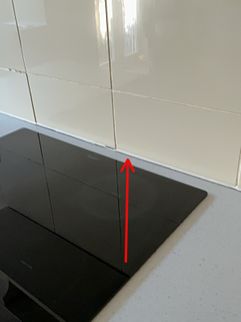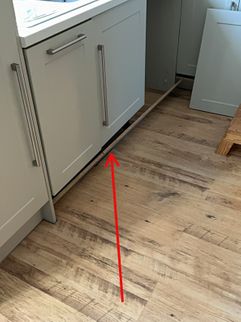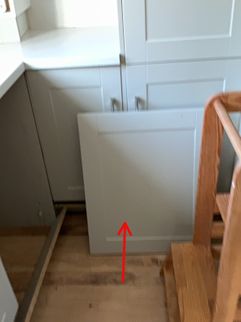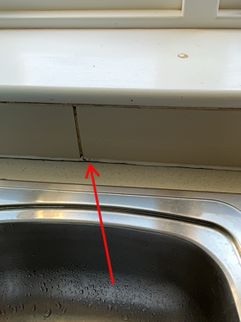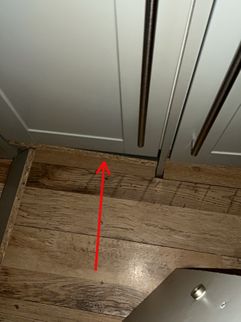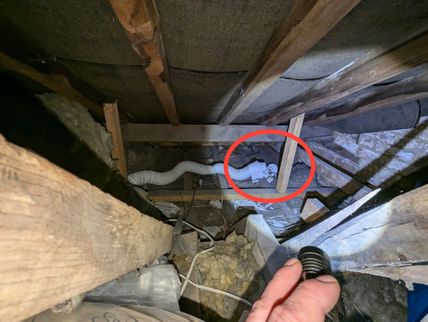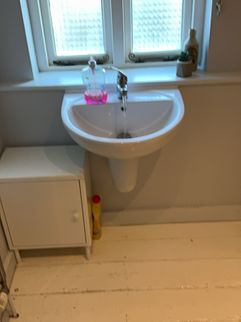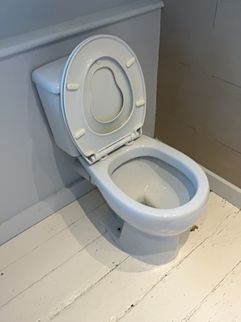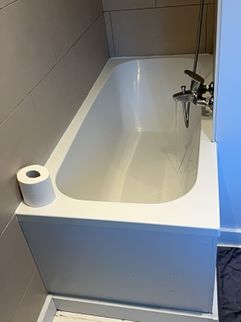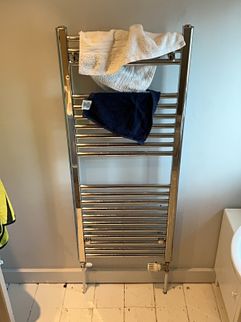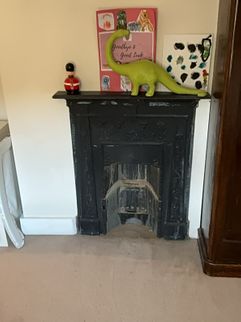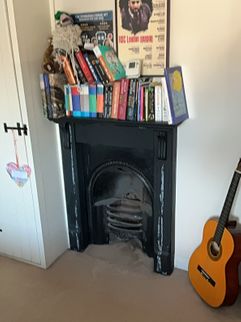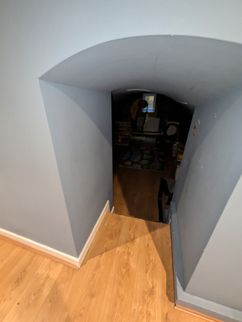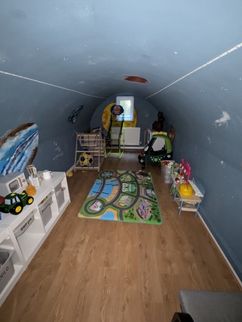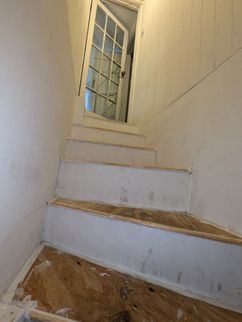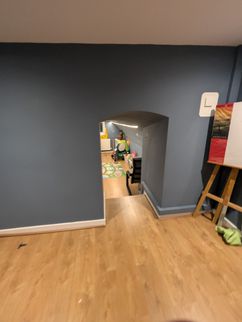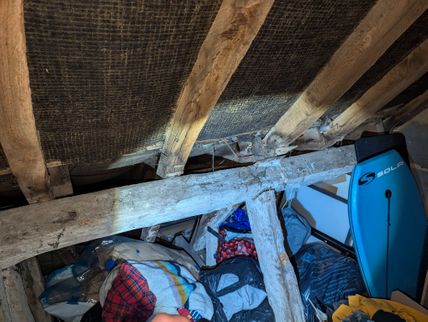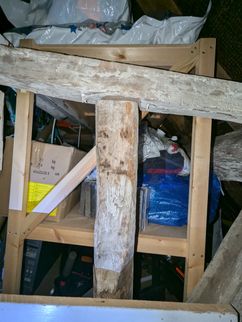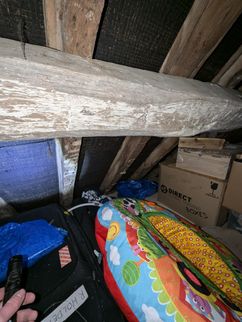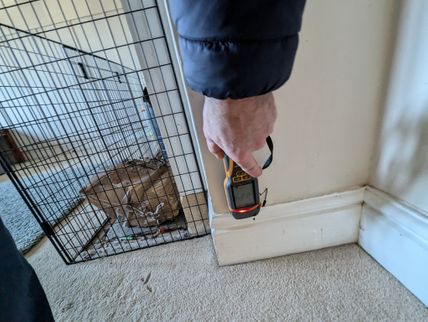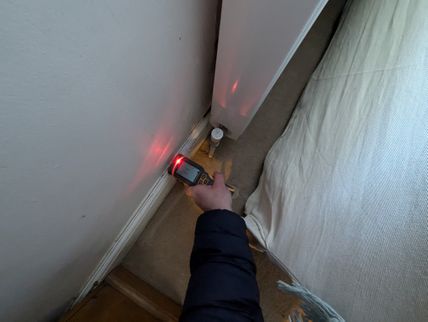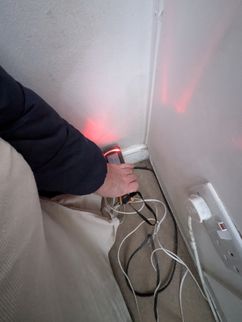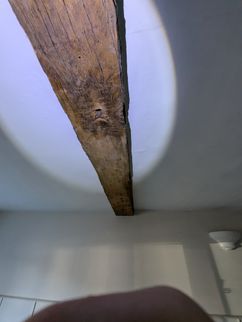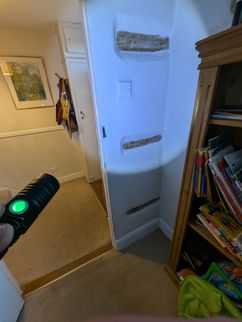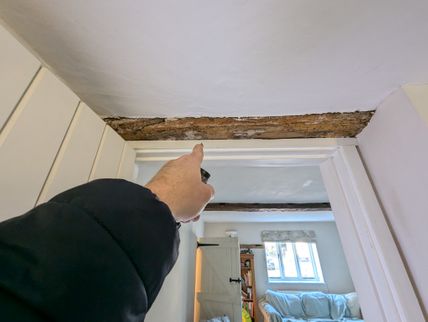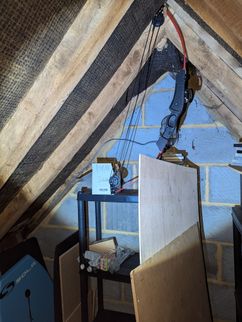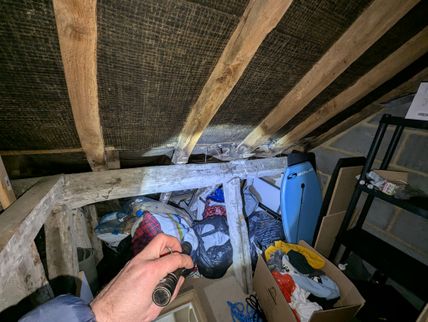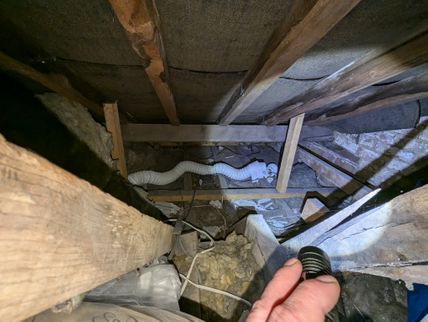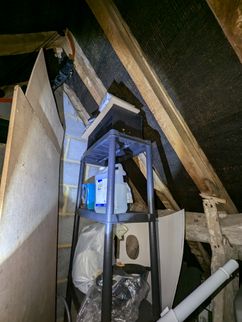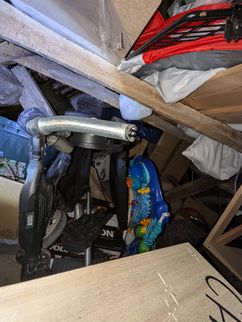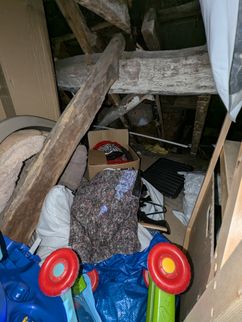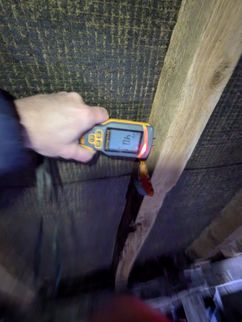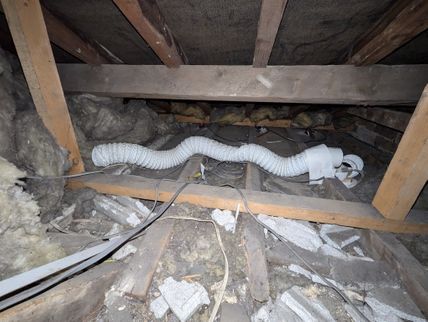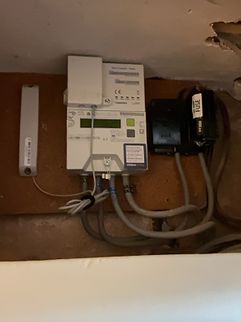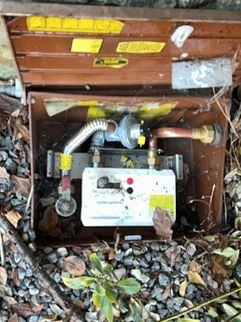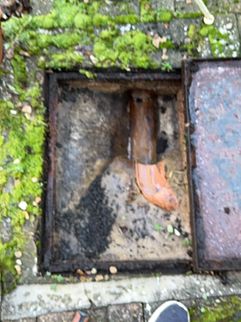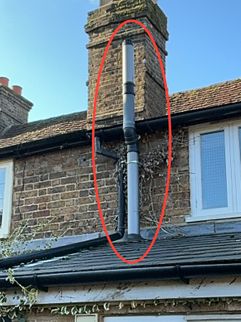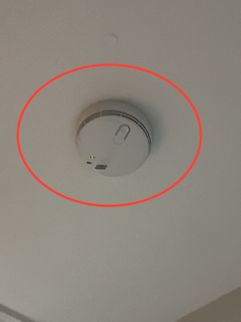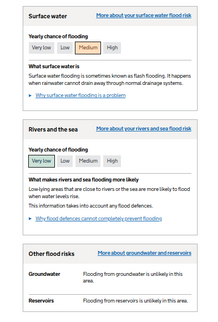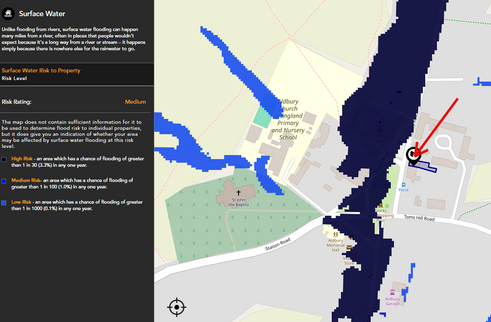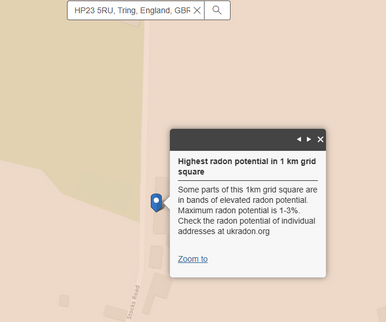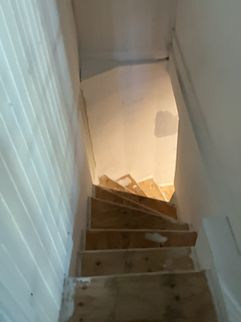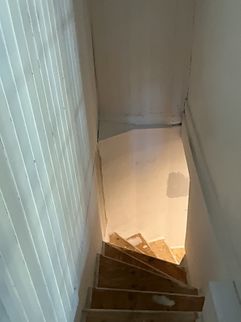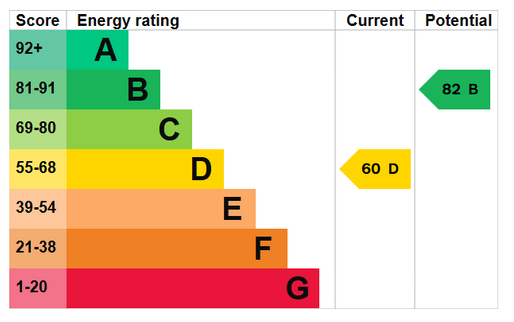
Lee Prowle AssocRICS MRPSA
Level 3 Home Survey
Our instruction is to conduct a comprehensive inspection of the subject property and provide a Level 3 Home Survey as outlined in the Terms of Engagement that you have received and signed.
This Level 3 Home Survey is a custom report format designed to meet or exceed the requirements set by the most recent RICS Level 3 Home Survey Standards. It is a clear and user friendly format, developed following feedback from our clients who wanted a thorough but easy to understand report.
Please note that our inspection is limited to visible and accessible areas of the property. We regret that we are unable to inspect any hidden or unexposed areas, such as covered timbers, hidden pipework/wiring, or inaccessible voids. Additionally, it is important to understand that we are not qualified electricians, gas engineers, or drainage contractors. Therefore, we cannot perform detailed testing or provide in-depth commentary on the services within the building. Furthermore, we will not undertake actions such as lifting floor coverings, moving heavy furniture, removing secured panels, or disturbing stored goods or the contents of cupboards during our inspection. Our observations are based on what is readily visible and accessible at the time of the survey.
The surveyor is equipped with various tools to aid in the inspection process. This includes a damp-meter for assessing moisture levels, binoculars for detailed observations, and a torch for examining areas with limited visibility. In addition, when required, our surveyor will use a ladder to access flat roofs and hatches that are no more than 3 meters above ground level outside or floor surfaces inside. These tools enable us to conduct a comprehensive assessment of the property and provide an accurate report.
In addition to the physical inspection of the property, our surveyor also conducts a desk-top study. This involves researching relevant information and reviewing documentation related to the property.
Any budget costs in this report are for guidance purposes only and are quoted exclusive of VAT and fees. These costs are not to be construed as a quotation, estimate or warranty as to the expense likely to be involved, but are for general guidance and are entirely dependent on the full extent of the work undertaken and the quality of the building materials and fittings used. You are advised to obtain competitive quotations from appropriate contractors prior to being legally committed to the purchase of this property.
The report provided is intended solely for your private and confidential use. It is strictly prohibited to reproduce the report, whether in its entirety or in part, without our explicit written permission. Except for your professional advisers, third parties are not authorised to utilise the report without our express written authority. Any reliance placed on the report by individuals other than yourself is entirely at their own risk.
Getting the Information to You
This report is designed to deliver important and occasionally technical information in a way that is easy to access and understand. The best way to get the layers of information that are presented in this report is to read it online (the HTML version) from the unique and secure web address provided in the link. This format allows you to expand your learning about this house with a dynamic experience far more engaging than a static document.
Viewing the report on a larger screen provides a superior experience as much detail can be lost on small devices like smart phones. For similar reasons, reports should only be printed in colour to retain as much detail as possible and minimise misinterpretation of photographs.
If you prefer, this report can be formatted to print on paper or to a PDF document.
Chapters and Sections
This report is divided into chapters that parcel the home into logical inspection elements. Each chapter is broken into sections that relate to a specific system or component of the home. You can navigate between chapters with the click of a button on the left side margin.
Observation Labels
All narrative observations are coloured, numbered and labeled to better understand their relative importance and refer to them as needed. Observation colours and labels used in this report are:
- Further Investigations:Matters that require further investigation by another professional, such as a qualified electrician to inspect the electrical system. Indicates the need for additional investigations before making a legal commitment to purchase the property.
- Health and Safety:A full Health and Safety risk assessment of the property and grounds was not conducted, however, any matters noted during the survey which could increase the risk of accidents or injury are reported here.
- Major Concern:Defects that are serious and/or need to be repaired, replaced or investigated urgently. Failure to do so could risk serious safety issues or severe long-term damage to your property.
- Important:These repairs or replacements will need attention within a 1-2 year timeframe. Nevertheless, it is advisable to assess each item individually and consider addressing them within a shorter period if necessary.
- Repair:Repair and maintenance items noted during inspection. Please note that some repair items can be expensive to correct such as re-finishing hardwood floors, but are considered simply repair items due to their cosmetic nature.
- Monitor:Items that should be watched to see if correction may be needed in the future.
- Improve or Upgrade:Observations that are not necessarily defects, but which could be improved for safety, efficiency, or reliability reasons. These are often items which reflect changes in building codes or standards.
- OK/Normal Maintenance:Elements that currently do not necessitate major repairs. Ongoing maintenance and periodic repairs are essential to prevent the development of defects in the future.
- Conveyancing Matters:Important information that must be reviewed by you and your legal advisor before committing to the purchase of the property.
- Other Matters:These sections are important and should be reviewed to gain a comprehensive understanding of the property.
- Not Inspected:This aspect of the property could not be inspected due to limited access, restricted view, or prior arrangements.
- Limitations:Conditions present at the time of inspection which limited the scope of this visual inspection
- Environmental Matters:A full environmental assessment of the property and grounds was not undertaken. Publicly available information is reproduced herewith, and may be supplemented by a more detailed search which can be commissioned by your conveyancer.
- Thermal Insulation and Energy Efficiency:
This section describes energy related matters for the property as a whole. It takes account of a broad range of energy related features and issues already identified in the previous sections of this report, and discusses how they may be affected by the condition of the property. This is not a formal energy assessment of the building but part of the report that will help you get a broader view of this topic. Although this may use information obtained from an available EPC, it does not check the certificate’s validity or accuracy. - General Advice and Further Information:
These sections are important and should be reviewed to gain a comprehensive understanding of the property.
Summary Page
During the course of the inspection it is likely that a number of defects were noted and you should obtain quotes and reports for the works required. The Summary Page will provide these headline issues but you should refer to the report in its entirety for the complete picture of this building.
The Full Report
Introduction
Related Party Disclosure
Property Status at the Time
Weather Conditions
General Description of the Property
Approximate Age
Location
Accommodation
Outside Areas, Outbuildings and Parking
Tenure
Facilities
Limitations
External Limitations
Grounds Limitations
Roof Space Limitations
Internal Limitations
Services Limitations
Roof Coverings
Main Roof Covering
Porch Roof Covering
Rear Extension Roof Covering
General Advice and Further Information
Rainwater Goods and Roofline Joinery
Rainwater Goods
Roofline Joinery
General Advice and Further Information
Main Walls
Main Walls
Left-hand Side Gable Wall
Rear Extension Walls
Movement/Stability
Original House Damp Proof Course
Rear Extension Damp Proof Course
General Advice and Further Information
Windows and External Doors
Timber Windows
uPVC Window
Front Door
Rear Doors
General Advice and Further Information
Inspection of the Grounds
Outbuildings
Rear Right-Hand Side Fencing
Rear Left-Hand Side Brick Wall
Rear and left-side fencing
Paths and Hardstandings
Neighbourly Matters
Floors and Sub Floor Ventilation
Floors
Floor Coverings
Sub Floor Ventilation
General Advice and Further Information
Internal Joinery and Decorations
Internal Joinery
Main staircase
Internal Decorations
General Advice and Further Information
Kitchen, Utility and Sanitary Rooms
Kitchen
Ground Floor Cloakroom
Bathroom
General Advice and Further Information
Environmental Matters
Overview
Flood
Geology
Radon
EMF's
Landfill
Invasive Species
Trees
Mining
Pollution
Historical Land Use
Health and Safety
Overview
Fire Risk and Means of Escape
Safety Glass
Lead Paint
Lead Pipes
Risk of Falls
Insects and Rodent Infestation
Recent Testing of Services
Asbestos
Introduction
Related Party Disclosure
We are not aware of any conflicts of interest relating to this instruction.
Property Status at the Time
The property was occupied and furnished.
The floors were covered.
Weather Conditions
At the time of inspection it was dry and sunny.
The weather shortly prior to the inspection was changeable.
General Description of the Property
For the avoidance of doubt all future reference in this report to left or right hand sides assumes a position standing facing the front elevation of the property from the road.
The subject property is a mid-terraced building constructed on from solid brickwork beneath a pitched roof covered with hand made clay tiles.
The property has a single storey rear extension. This is formed from cavity brickwork beneath a pitched roof covered with natural slates.
There is a basement in the property, accessed via a stairwell in the kitchen.
Approximate Age
We estimate that the property was built in the late 1900s. You should consult the local Council and the property deeds for more accurate information.
Location
The property is located within a reasonable distance of amenities, including shops, schools and public transport links.
Accommodation
Lower ground floor
- Two sitting rooms
Ground floor
- One kitchen diner
- One sitting room
- One cloakroom
First floor
- Two bedrooms
- One bathroom
Outside Areas, Outbuildings and Parking
The property has a rear garden.
There are no significant outbuildings or garages.
Tenure
We understand that the property is freehold. You should ask your legal adviser to confirm this and explain the implications.
Facilities
It is crucial to familiarise yourself with the locality and its facilities before making a purchase. Understanding the neighbourhood and its amenities will provide you with valuable insights and help you make an informed decision.
Limitations
External Limitations
The roofs and chimney were only visible via a high-resolution camera on an extendable pole. Whilst this gives us access to areas that would otherwise not be visible, it is a limited inspection as details such as small cracks can often not be distinguished.
We had no access to the neighbouring properties and therefore cannot comment on the condition of the sides of the extensions or any areas not visible from the property itself or from vantage points in public areas.
Grounds Limitations
There is a small brick-built shed in the rear garden, and we were unable to view the left and rear of it and cannot comment clearly on the condition of these parts.
Roof Space Limitations
A substantial number of stored items were present in the main roof void, which significantly restricted our access and inspection. It is important to note that ceiling joists are not designed to bear heavy loads, and the roof should only be utilised for light storage purposes.
There was no access to the rear extension roof space and we cannot comment on its type and condition.
Internal Limitations
The property was fully furnished, with fitted floor coverings throughout. This hindered our inspection of the walls and floors. Furthermore, all fitted units, cupboards, and storage areas were filled with stored items, limiting our inspection of these spaces. However, we made efforts to move items where possible to facilitate the inspection.
The presence of dry lining on some walls limited our ability to conduct a comprehensive inspection for dampness. In the future, if dampness occurs, patches may appear on the walls where the drywall boards are attached. In such cases, it is advisable to arrange an inspection by a damp proofing specialist registered with the Property Care Association (PCA) to determine the cause of the dampness and undertake necessary remedial actions.
Services Limitations
We conducted a visual inspection of accessible services and noted any visible defects. However, please note that we are not qualified specialists in electrical, gas, or drainage work, so we cannot provide detailed testing or a full assessment of these services.
Service installations such as wiring, plumbing, and drainage are often concealed and may deteriorate over time. Regular inspection and testing are recommended to ensure their ongoing safety and functionality.
We advise you to request recent test certificates from the current owner. Electrical systems typically require testing every 10 years for owner-occupied homes and every 5 years for rental properties or newly occupied homes.
Additionally, all gas appliances should undergo annual safety checks by a Gas Safe registered engineer and be serviced per the manufacturer's instructions. Neglecting these checks poses a risk of carbon monoxide exposure. Gas pipework should also be inspected during the safety check. Landlords are legally required to service gas installations annually for rental properties.
For thorough inspection and servicing, consult qualified professionals in each field to ensure safety and compliance.
Chimney Stacks
Chimney Stack
Construction: Brick
Finishes: Pointed masonry
Flashing: Lead
Aerial: No
Shared: No
Condition:
- Small areas of open-jointed masonry.
- Significant moss growth
- Old and untidy lead flashings
Action Required:
- The observed defects in the stack pose a risk of damp infiltration and potential instability. To ensure it remains weatherproof and stable, a complete overhaul is advised. Arranging for these essential repairs as soon as possible will effectively address the issues.
- Scaffolding will likely be required to provide safe access for repairs, allowing workers to efficiently address the stack's issues at height. Proper scaffolding is essential for safety and effective project completion.
- We recommend obtaining quotes from reputable roofing contractors.
Budget Costs:
- £600 plus access
Condition:
The chimney stack shows a slight lean, but the degree of movement is currently within acceptable limits.
Action Required:
Ongoing monitoring is recommended. Should further displacement occur, stability could be compromised, which may require partial or complete reconstruction of the stack.
General Advice and Further Information
- Due to their prominent position, chimneys are generally exposed to more severe weather than other parts of the building, making them prone to weathering. Regular maintenance is essential to prevent deterioration and dampness from affecting the property. Consistent upkeep of chimney stacks helps mitigate issues and protect the home from damp-related problems.
- When performing repairs, it’s advisable to assess all concealed components of the chimneys for any additional necessary work. This proactive approach addresses underlying issues and prevents future problems. Before repairs begin, regular internal checks for water leakage are recommended, as early detection allows for prompt intervention, safeguarding the property from damage.
- Given the age of the property, the chimneys are unlikely to have damp proof courses (DPCs). As a result, despite good flashings, occasional internal dampness may occur as natural moisture in the stacks can enter indoor spaces. Awareness of this characteristic helps in managing potential damp issues.
Roof Coverings
Main Roof Covering
Covering: Hand-made clay plain tiles, Welsh slates
Pitch: Low pitch to slate roof section
Condition:
- A small number of broken tiles
- Loose ridge tiles
- Perished eaves felt
Action Required
- The identified defects pose a significant risk of water penetration, potentially leading to deterioration of internal elements and timber decay. A comprehensive overhaul of the roof covering is crucial to ensure it is sound and weatherproof. Prioritising these repairs is recommended to prevent further damage and maintain a safe, structurally sound environment.
- Scaffolding will likely be required for safe access, enabling workers to address issues at height effectively. Proper scaffolding is essential for both safety and project completion.
- We recommend obtaining quotes from reputable roofing contractors.
Budget Costs:
£1200 plus access.
We observed that some tiles are beginning to shale, which is common for tiles of this type as they age. It’s likely that reclaimed tiles were used when the roof was replaced. This does not indicate an immediate need for roof replacement; however, regular maintenance, preferably in the spring, should be carried out to preserve its condition. The current roof covering is estimated to have at least 10 years of remaining lifespan, provided yearly maintenance is undertaken.
Porch Roof Covering
Covering: Hand-made clay tiles
Flashing: Tile fillet
Condition:
- The roof is significantly covered with climbing plants which can damage the roof and cause issues associated with dampness and decay.
Action:
- We recommend the climbing plants be removed and the roof covering further inspected and any repairs required should be carried out at this time.
- We recommend you have time quotations from reputable roofing contractors.
Budget Costs:
- £200
Rear Extension Roof Covering
Covering: Natural slates
Pitch: Low
Flashing: Lead
Condition:
- We observed a number of perishing slates, which is a common issue caused by pyrites present in Spanish slates of this type.
Action:
- We recommend replacing the affected slates in the short term to prevent water seepage, which could lead to internal dampness and decay.
- Quotations should be obtained from reputable roofing contractors to carry out the necessary works.
Budget Costs:
- £200 for repairs
Additionally, the pitch of the roof is too low for the type of slates installed. This can make the roof more prone to leaking during certain weather conditions. While roofs with this pitch do not always leak, there is an increased risk. Regular monitoring for leaks is recommended to address any issues promptly.
Budget costs:
- £2500 for replacement if required
General Advice and Further Information
Pitched roof advice:
- Given the roof covering's type and age, ongoing maintenance is likely needed to maintain its weathertight condition. long-term renewal may prove more cost-effective, resolving issues comprehensively and enhancing durability.
- The roof surfaces show some unevenness, likely due to gradual timber displacement. This is typical for roofs of similar age and is unlikely to worsen significantly. Regular monitoring is recommended to address any changes if needed.
- Moss on the roof may hinder proper rainwater runoff and cause roof covering deterioration. Prompt moss removal and regular maintenance can help ensure effective drainage and prolong roof life.
- Clay roof tiles can deteriorate over time due to moisture and frost, leading to de-lamination, often visible on the tile underside. Regular monitoring is needed to address any slipping or damage to prevent further issues and prolong roof life.
- Roofing felt can become brittle with exposure, especially at the edges. Maintaining coverings and promptly replacing deteriorated sections helps sustain roof integrity over time.
Rainwater Goods and Roofline Joinery
Rainwater Goods
Material: uPVC
Type: Half-round gutters and downpipes
Shared: Yes
Raining:
It was not raining at the time of inspection and, therefore, it was not possible to confirm whether the rainwater goods are watertight.
Condition:
- The front elevation rainwater goods are old and brittle, requiring monitoring for potential failures.
- Poor join where the gutter joins the neighbouring property at the front and rear.
- Additionally, the rainwater pipe on the left-hand side drains directly into the ground at the front, which was common practice when the property was built, as there was no formal drainage system.
- The rear rainwater goods are similar to the front, but slightly newer. There is a dip in the middle of the guttering, and a poor joint is evident on the right-hand side.
- The rear downpipe discharges into the extension gutter, which has the potential to overflow during heavy rainfall.
Action required:
- The front rainwater goods should be overhauled in the short term to avoid leaks and water damage.
- The left-hand downpipe should also be reviewed by a drainage specialist to confirm whether it requires redirection into a modern drainage system.
- The rear guttering requires immediate repairs to correct the dip and address the poor joint on the right-hand side.
- The downpipe discharging into the extension gutter should be adjusted or redirected to prevent overflow.
- Quotations should be obtained from reputable contractors for these works.
Budget Costs:
- £1800 plus access
Roofline Joinery
Material: Timber
Type: Fascia boards, Soffit boards
Condition:
- Significantly weathered
- Peeling paint
Action Required:
- The elements have experienced weathering and require an overhaul. Prompt action is advised to prevent further deterioration, helping to maintain their longevity and functionality.
- The roofline joinery requires sanding and redecoration. This involves removing old paint or imperfections and applying a fresh coat to enhance appearance and durability.
- If rot is found, the affected areas should be removed and replaced before redecoration, addressing the issue at its source for a lasting result.
- Scaffolding will likely be necessary, providing safe access and stability for workers to complete the repairs efficiently and safely.
- We recommend obtaining quotes from reputable roofing/roofline contractors.
Budget Costs:
- £1500 plus access
General Advice and Further Information
- Leaking rainwater systems can lead to dampness and structural deterioration. Regular cleaning and maintenance of gutters and downpipes, especially at seals and joints, are essential to mitigate these risks.
- This upkeep is particularly crucial if there are many trees nearby, as regular maintenance helps prevent blockages, debris build-up, and leaks, ensuring effective drainage and reducing the chance of damp-related damage.
- Given the property’s age, some paint may contain lead, posing health risks if removed improperly. Consult the Health and Safety Executive (HSE) before removing paint, and follow HSE guidelines to safely handle lead-based paint.
Main Walls
Main Walls
Type: Solid brick
Approximate wall thickness: 250 mm
Finishes: Pointed brickwork
Condition:
- The front elevation walls are constructed from solid Flemish bond brickwork with cement-pointed finishes.
- Ivy partially covers the front elevation, posing a risk of damage to the masonry over time.
- Minor damage and cracks were observed on the front elevation walls.
- The rear elevation wall retains its original lime mortar finish, which is deteriorating and requires attention to prevent further damage.
Action Required:
- Carefully remove the ivy from the front elevation to prevent damage to the brickwork and mortar.
- Address minor cracks and damage on the front elevation by repairing and repointing where necessary.
- Rake out and repoint the rear elevation wall using a suitable lime-based mortar to maintain breathability and compatibility with the building's traditional construction.
- Engage a reputable contractor experienced in working with traditional materials to carry out these repairs.
Budget Costs:
- £1750 plus access.
Condition:
- The front elevation walls have been repointed with cementitious mortar, which is not appropriate for a property of this type with solid walls. Although no issues were observed during the inspection, cementitious pointing can lead to perishing of the brickwork and internal dampness or decay over time.
Action required:
- We recommend regularly monitoring the walls for signs of brickwork deterioration and internally for evidence of dampness or decay. Re- pointing with a suitable lime-based mortar should be carried out as required to maintain the condition of the walls and prevent further issues.
- Additionally, we advise budgeting for the raking out and re-pointing of the walls in lime-based mortar as part of your long-term maintenance plan. This work should be undertaken by a reputable building contractor skilled in heritage repairs.
Condition:
- As part of the rear extension works, the original main walls to the rear addition have been removed at ground floor level. Steel beams would have been required to support the structure above. These beams are concealed within the building fabric, and we were unable to inspect them directly. However, we observed no signs of distress or distortion in the surrounding structure at present.
Action Required:
- We recommend that your solicitor verifies whether these works were approved by the local building inspector and that appropriate certification is in place.
Left-hand Side Gable Wall
Description: The gable walls has been clay with clay plain tiles.
Condition:
- The gable wall appears to have undergone a damp-proof treatment, but the condition of the coating behind the tiles could not be assessed.
- The wall tiling is in reasonable condition, with no significant defects observed.
Action Required:
- Monitor the wall tiling periodically to ensure no defects or deterioration develop over time.
Rear Extension Walls
Type: Cavity brick with insulation.
Approximate wall thickness: 300 mm
Finishes: Pointed brickwork
Condition:
- The extension walls appear to be in satisfactory condition where visible. However, we had no access to inspect both sides of the walls and therefore cannot comment on their overall condition.
Action required:
- We recommend arranging access to inspect the inaccessible areas of the extension walls to confirm their condition and identify any potential issues that may require attention.
Movement/Stability
General: foundations
Most properties have foundations beneath main walls to support the structure and transfer loads to the ground. However, without exposing them, we cannot assess their design, condition, or performance. If there are concerns, consult a qualified structural engineer for a comprehensive evaluation.
Condition:
- The front walls are structurally sound, but the left gable is covered with tiles, preventing an assessment of the condition behind this area.
Action required:
- No immediate action is necessary, and a detailed examination of the foundations is not required at this time. Regular monitoring should be included as part of routine maintenance to ensure ongoing stability.
General:
A damp proof course (DPC) is an impermeable barrier at the base of a wall, preventing groundwater from entering the building. Rising damp is often due to a failed or missing DPC, leading to issues like damaged plaster, skirting board decay, and sub-floor damage. Regular inspections and maintenance of the DPC are essential to prevent these problems and maintain the building's integrity.
Original House Damp Proof Course
Type: Not visible
Due to the external finish of the property, we were unable to confirm the presence of a damp proof course (DPC). Given the age of the property, it is likely that no DPC was originally installed. However, the property does have a brick plinth, which was typically constructed to help reduce dampness.
Condition:
- Low-level dampness has been detected in the primary walls at ground floor level.
Action required:
- Damp remediation works are now required. Please refer to the damp and timber section of the report for further details and budget costs.
- It is recommended that these works be carried out by a PCA-registered contractor to ensure proper and effective treatment.
Rear Extension Damp Proof Course
Type: Plastic
Condition:
- The ground levels at the rear of the property are high and bridge the damp-proof course (DPC). This can lead to internal dampness and decay over time.
Action required:
- We recommend lowering the ground levels adjacent to the walls to a minimum distance of 150mm below the DPC. This will help prevent internal dampness and maintain the integrity of the property.
- These works should be carried out by a reputable contractor with experience in damp prevention.
Budget Costs:
- £800
General Advice and Further Information
Main walls advice
- Solid masonry walls, typical in older buildings, are more vulnerable to damp than modern cavity walls. These walls rely on a sound external finish for weatherproofing, though severe weather can still cause water penetration, especially in thinner walls. Concealed timbers, like lintels, may decay if damp, and solid walls generally have lower insulation than cavity walls, leading to higher heat loss. Regular maintenance of the external finish is essential to avoid moisture and timber decay.
- Climbing plants attached to walls can trap moisture, leading to damp. It’s advisable to trim plants back to keep foliage away from windows, vents, and rainwater goods to prevent moisture problems.
- Foundations in older properties are likely shallow, making movement more likely, especially on shrinkable subsoil. Proper drainage and vegetation management are crucial to protect foundations. Buildings insurance that covers structural movement is recommended for added security.
- Mature trees near the building, especially on shrinkable subsoil, should be pruned regularly to minimise risks. Your Legal Adviser can provide guidance on neighbouring trees for any legal considerations. It is assumed the building’s foundations accounted for these mature trees to manage any impact on the foundation.
Windows and External Doors
Timber Windows
Frame type: Timber
Glazing: Double glazed
The front left-hand side windows to the ground and first floor are slightly covered reasonable condition with no significant defects however the timber seals do not project far enough out to the first floor window and this should be monitored. Additionally under the right hand side first floor window, it has not been sealed sufficiently All to the ground floor window.
The rear elevation windows are in a similar condition to the front elevation windows with some sales not projecting far enough however the sales have been sealed below
Condition:
- The front left-hand side windows on the ground and first floors are in reasonable condition with no significant defects. However, the timber sills on the first-floor window do not project far enough, which could allow water ingress, and this should be monitored.
- Additionally, the front elevation windows have not been sufficiently sealed under the sills.
- The rear elevation windows are in a similar condition to the front elevation windows, with some sills not projecting far enough. However, the sills have been sealed below, reducing the immediate risk of water ingress.
Action required:
- Monitor the windows where the sills do not project far enough and address any signs of water ingress promptly.
- The insufficient sealing on the ground floor and right-hand side first-floor windows should be corrected to prevent water penetration.
- We recommend engaging a reputable contractor to assess and carry out any necessary repairs or improvements to the windows and sills.
Budget Costs:
- £300 plus access
uPVC Window
Frame type: uPVC
Glazing: Double glazed
Front Door
Construction: Timber
Condition:
- The door is slightly weathered and shows signs of general wear and tear.
- Additionally, the bottom lock is of poor quality, and no key is available for it.
Action required:
- We recommend refurbishing the door to address the weathering and wear. The bottom lock should be replaced with a high-quality lock, and a new key should be provided to ensure security.
- These works should be carried out by a reputable door specialist or handyman.
Budget Costs:
- £400
Rear Doors
Construction: Timber
Keys: Yes
Condition:
- The rear bifold doors are slightly weathered, with some areas of bare timber and general wear and tear.
- Additionally, the threshold does not project far enough, which could increase the risk of water ingress.
Action required:
- We recommend rubbing down and redecorating the doors in the near future to protect the timber and maintain their condition.
- The threshold should be monitored for signs of water ingress, and adjustments or improvements may be required if issues arise.
- These works should be carried out by a reputable contractor.
Budget Costs:
- £350
General Advice and Further Information
- Since April 2002, replacement windows and doors with over 50% glazing should be installed by a contractor registered with a scheme like FENSA or have Building Regulation approval. Your legal adviser should confirm this. This excludes broken pane repairs or frame sections, applying only to full frame and glazing replacements.
- Junctions between window/door frames and surrounding walls are susceptible to water penetration, particularly in severe weather. Regular inspection and maintenance of the seals are essential to prevent water ingress and related damage.
- Timber windows and doors need regular maintenance for longevity. Softwood timbers are particularly prone to decay, and repair may involve replacing rotted sections. At a certain point, complete replacement becomes more cost-effective than repairs.
Other Joinery and External Decorations
Storm Porch
Condition:
- The storm porch joinery is partially covered with ivy, which obscures some areas. Where visible, the joinery appears weathered and requires maintenance.
Action required:
- The ivy should be carefully removed to prevent further damage and to allow a thorough inspection.
- The joinery should then be rubbed down and redecorated to protect it from further weathering.
- These works should be scheduled in the near future and carried out by a reputable contractor.
Budget Costs:
- £500
General Advice and Further Information
Outside decorations help keep the property in satisfactory condition. Without a protective finish, parts will quickly deteriorate requiring extensive repairs. To prevent this, the external surfaces should be redecorated regularly.
Other External Areas
Front glazed basement vent
Condition:
- The basement glazing is in poor condition.
Action required:
- The broken glazing should be replaced promptly with suitable replacement that incorporates proper ventilation to ensure adequate airflow in the basement. This will help reduce the risk of dampness and maintain the basement's condition.
- These works should be carried out by a reputable contractor.
Budget Cost:
- £400
Rear Metal Grate
Description: Metal Grate
Condition:
- The rear access hatch is constructed from steel and is beginning to rust, which could lead to further deterioration over time.
Action required:
- We recommend rubbing down and redecorating the hatch to prevent further rusting and maintain its condition.
- These works should be completed by a reputable contractor.
Budget Costs:
- £300
Regular monitoring should also be carried out to ensure it remains safe and functional.
Inspection of the Grounds
Outbuildings
Construction: Solid brickwork
Roof type: Profile still
Condition:
- We were unable to inspect parts of the outbuilding located on the neighbouring property and therefore cannot comment on their condition.
- However, the outbuilding is in a poor state of disrepair, with damaged and cracked masonry, ivy covering parts of the structure, and issues with the timber components, including the bottom of the roof, the door, and the frame.
Action required:
- We recommend a significant overhaul of the outbuilding to restore it to a functional state. Regular maintenance should then be carried out to ensure its ongoing structural soundness.
- These works should be undertaken by a reputable building contractor.
Budget cost:
- £3,000.
Rear Right-Hand Side Fencing
Type: Timber fencing, Shrubbery
Condition:
- The timber fencing on the right-hand side of the rear garden is in very poor condition, with significant deterioration.
Action required:
- The fencing should be replaced by a reputable fencing contractor to restore the boundary and ensure its durability.
- It is recommended to consult your legal advisers to confirm the maintenance responsibilities for the property boundaries. By seeking legal guidance, you can determine the specific obligations and responsibilities related to the maintenance and repair of the boundaries, including the fencing.
Budget costs:
- £1800
Rear Left-Hand Side Brick Wall
Type: Bricks walls
Condition:
- The brick wall on the left-hand side boundary is in poor condition in some areas, with visible deterioration.
Action required:
- The wall requires partial rebuilding and raking out and repointing of the joints where necessary.
- These works should be carried out by a reputable bricklayer to restore the wall's structural integrity and appearance.
- Regular maintenance is recommended to prevent further deterioration.
- It is recommended to consult your legal advisers to confirm the maintenance responsibilities for the property boundaries. By seeking legal guidance, you can determine the specific obligations and responsibilities related to the maintenance and repair of the boundaries.
Budget Costs:
- £1500
Rear and left-side fencing
Type: Timber fencing
Condition:
- The timber fencing on the left-hand side and rear of the property is weathered but remains in satisfactory condition.
Action required:
- No immediate action is required.
- However, regular maintenance, such as cleaning and treating the timber, is recommended to extend the lifespan of the fencing and prevent further weathering.
Paths and Hardstandings
Type: Concrete pavers, Gravel
Condition:
- The rear patio is uneven and includes a high step, posing a trip hazard.
Action required:
- We recommend that the patio be made safe in the short term by addressing the uneven surfaces and high step. This could involve levelling the patio and adjusting the step to reduce the risk of trips and falls.
- These works should be carried out by a reputable contractor to ensure safety and functionality.
Condition:
- There is a small garden section at the front of the property, featuring a soldier course brick perimeter and a gravel path. No significant defects were observed.
Action required:
- No immediate action is required. Regular maintenance, such as cleaning and weeding, is recommended to preserve the appearance and condition of the garden section.
Neighbourly Matters
During the survey, a general overview of the immediate local area was conducted to identify any potential issues that could impact the normal enjoyment of the property. Based on this inspection, no specific causes for concern were noted.
However, it is important to note that issues may exist at different times or under different circumstances that were not apparent during the survey. Therefore, it is highly recommended to visit the property on multiple occasions at various times of the day and night.
By visiting the property at different times, you can gain firsthand experience and insight into various factors that may influence your enjoyment of the property. This includes evaluating noise levels, traffic patterns, neighbourhood activities, and any other relevant aspects that could impact your living experience.
In order to make a well-informed decision about the property purchase, it is essential to personally assess the local area and determine if it aligns with your preferences and requirements. By conducting multiple visits, you can form a more comprehensive understanding of the immediate surroundings and potential factors that may affect your decision.
Ceilings, Walls and Partitions
Ceilings
Type: Combination of lath and plaster and modern plasterboard
Ceiling finishes: Skimmed and painted, Papered
Condition:
- The original kitchen ceiling is uneven, with damaged plasterboard that is loose and can collapse and requires replacement. The living room ceiling is also uneven and distorted, particularly near the chimney breast, and requires replacement.
- The hallway ceiling appears to have been boarded over and is in acceptable condition.
- The basement ceilings are in satisfactory condition.
- The first-floor ceilings are generally in good condition, with some minor damage and nail popping observed in the rear bedroom and bathroom.
Action required:
- Budget for the full replacement of the kitchen and living room ceilings to address the uneven surfaces and ensure safety.
- Minor repairs should be carried out on the first-floor ceilings to fix the nail popping and any damaged areas.
- These works should be undertaken by a reputable plastering contractor.
Budget Costs:
- £4000
Walls and Partitions
Condition:
- The basement and rear extension walls display normal minor cracking but are otherwise in satisfactory condition.
- However, the plaster finishes throughout the rest of the property have been papered over and are becoming detached in many areas.
Action required:
- No immediate action is required for the basement and rear extension.
- However, a full replastering of the detached areas will likely be required during the next redecoration cycle to restore the finishes and ensure durability.
- This work should be carried out by a reputable plastering contractor using breathable lime plaster.
Budget costs:
- £4000 to £8000 depending on the extent of plastering required.
- Additionally some plastering will be required during damp proofing works.
Condition:
- Timbers embedded into the walls on the front elevation were observed. These timbers form part of the structural framework but are vulnerable to dampness and decay over time. This condition can compromise the structural integrity of the walls if not addressed.
Action Required:
- Regular monitoring of these timbers is essential to identify early signs of dampness or decay. Timbers showing significant deterioration should be replaced as necessary to preserve the structural integrity of the walls. It is advisable to engage a PCA-registered damp and timber contractor to assess and carry out any required remedial works.
General Advice and Further Information
Lath and plaster construction involves applying plaster onto laths fixed to timber joists, with gaps allowing the plaster to bond securely. While a well-maintained lath and plaster ceiling can last over 100 years, age and factors like flexing joists or central heating can cause cracks and loosening, potentially leading to failure and collapse. Regular monitoring and professional inspections are crucial to identifying deterioration and ensuring safety. When necessary, replacement should be done by experienced contractors to minimise risks and maintain the building's integrity.
Modern ceilings are typically constructed using plasterboard, which is nailed or screwed in place and taped for a final plaster skim coat. Minor cracks at the plasterboard joints, often due to drying or vibrations, are common and usually cosmetic, not indicating structural issues. These can be repaired with joint compound or filler, sanding, and repainting. While generally not a cause for concern, wider or more extensive cracks should be assessed by a professional. Understanding that these cracks are typically cosmetic ensures they do not pose a structural risk, and regular maintenance can help preserve the ceiling's appearance.
Many of the ceilings in the property are concealed by paper linings, with minor cracking and unevenness observed, indicating potential loss of bond between the lining and underlying plaster. While currently serviceable, removing the lining may cause plaster detachment, requiring localised repairs. The paper lining helps maintain the ceilings' appearance, but over time, adhesion may weaken. If you choose to remove it, be prepared for possible repairs, such as patching or reapplication of plaster. Engaging experienced professionals is recommended to ensure effective repairs and maintain the ceilings' appearance and integrity
Some ceilings in the property have a textured finish, which may contain low levels of asbestos. It is important to note that these textured finishes, commonly known as Artex, can pose potential health risks if disturbed. However, if the textured finish is undisturbed and in satisfactory condition, it should not present immediate health hazards.
To ensure the safety of occupants, it is crucial to avoid cutting or working with the textured finish in any way that could release asbestos fibers into the air. Specialist advice should be sought if there is a need to remove or make changes to the textured finish. Removing asbestos-containing materials can be a complex and costly process, requiring the expertise of licensed asbestos specialists.
While the textured finishes may be in satisfactory condition currently, it is essential to remain vigilant and monitor their condition over time. Any signs of deterioration or damage, such as cracks, peeling, or crumbling, should be addressed promptly by professionals experienced in handling asbestos materials.
Many of the walls in the property are concealed by paper linings, with minor cracking and unevenness observed, indicating a potential loss of bond between the lining and underlying plaster. While currently serviceable, removing the lining may cause plaster detachment, requiring localised repairs. The paper lining helps maintain the walls' appearance, but over time, adhesion may weaken, leading to the need for careful attention and repairs if the lining is removed for redecoration or other reasons.
Some movement has been observed in the internal partition walls, causing slight distortion of door frames at the first-floor level. This movement appears stable and within acceptable tolerances for a property of this age. Minor movement over time is typical due to settlement and normal structural dynamics. However, it is advisable to monitor these areas periodically, and if significant changes occur, a structural engineer should be consulted to assess the situation and recommend any necessary repairs.
Floors and Sub Floor Ventilation
Floors
Ground floors: Solid concrete, Suspended timber
Upper floors: Suspended timber
General limitation
Due to the presence of the vendors’ fitted floor coverings no view of the floor structures could be obtained and we cannot advise on their condition. It is often impractical to ask vendors to lift fitted floor coverings as this may prove disruptive and costly. As such, there is a risk that defects maybe hidden beneath the floor coverings. When the floor structures are next exposed, we recommend you instruct a timber specialist to inspect and report on the condition of the floors.
Condition:
- The timber floors are uneven and spring slightly, which is typical for properties of this period. However, some loose floorboards were felt underfoot on the landing, indicating that repairs may be required when the carpets are lifted.
Action required:
- Repairs to loose floorboards on the first floor should be carried out when the carpets are removed to ensure safety and stability.
- Regular monitoring of the floors is advised to detect any further changes or issues that may arise over time. These works should be completed by a qualified contractor.
Floor Coverings
Type: Carpet, Wood flooring, Tiles
Condition:
- The floor coverings are showing general wear and tear, which is typical with age and usage.
Action required:
- It is assumed that you have already assessed their suitability and adequacy for your specific needs. If replacement or upgrades are required, these should be carried out as part of routine maintenance or as per your preferences. Regular cleaning and care are recommended to prolong their lifespan.
Sub Floor Ventilation
Condition: inadequate sub floor
Condition:
- The suspended ground floor lacks adequate ventilation, with insufficient or blocked vents and areas of unventilated sub-floor voids.
- This increases the risk of damp, condensation, and timber decay, potentially leading to structural issues like sagging or collapse.
Action Required:
- Install additional vents to improve airflow.
- Inspect sub-floor voids by lifting sample floorboards to check for damage or decay.
- Clear any obstructions to restore proper cross-ventilation.
- Address any issues promptly if defects are found.
- Maintaining proper ventilation is essential for structural stability and a safe living environment.
General Advice and Further Information
Although the concrete floors seem to be generally level, it is possible for them to subside over time due to factors such as subpar workmanship or issues with the materials used or the ground beneath. Without conducting destructive investigations, it is not possible to provide specific comments on the quality of the floor construction or the conditions of the sub-floor ground. It is advisable to consult with professionals who can assess the situation accurately through appropriate inspections and tests.
A traditional suspended timber ground floor consists of a surface finish, such as floorboards, supported by a timber sub-structure, which in turn rests on masonry or is supported by the main walls. This construction creates a void between the floor surface and the ground below.
However, these types of floors are prone to various problems, primarily related to dampness and condensation within the building. These issues can result in the decay of the timber components, leading to problems such as sagging and springing of the floors. If left unaddressed, these issues can ultimately lead to floor collapse.
Additionally, over time, these floors are also prone to becoming uneven due to the long-term settlement of the building. This settlement can cause the floors to develop uneven surfaces or slopes.
It is important to be aware of these potential issues with traditional suspended timber ground floors and take appropriate measures to address them. Regular inspections, maintenance, and necessary repairs can help mitigate the effects of dampness, decay, and settlement, ensuring the long-term stability and safety of the floor structure.
Suspended timber upper floors are constructed with a surface finish, typically floorboards, which are supported by a timber substructure. This substructure is then supported by either external or internal walls, or a combination of both. When these floors are well maintained, they tend to be durable and reliable.
Proper maintenance plays a crucial role in ensuring the longevity of suspended timber upper floors. Regular inspections, addressing any signs of damage or wear, and addressing maintenance issues promptly can help preserve the structural integrity of the floors. This includes addressing any issues related to dampness, decay, or structural damage that may arise over time.
During the inspection, no visible evidence of dry rot, wet rot, or active woodworm infestation was found. However, it is important to note that these issues may only become apparent when fitted covers or finishes are removed. Hidden areas behind covers or concealed within the structure may reveal the presence of such problems.
Internal Joinery and Decorations
Internal Joinery
Type: Skirtings, Architraves, Doors, Timber cladding , Staircases
Condition:
- The internal joinery is in reasonable condition, with some wear and tear that is typical for a property of this age.
Action required:
- No immediate action is required. Regular maintenance, such as cleaning and minor repairs, is recommended to preserve the joinery and address any emerging issues over time.
Main staircase
Condition:
- The main staircase slopes from left to right. This type of movement is common in older buildings and is not significant at present.
Action Required:
- Monitor the staircase over time. If further movement or damage is observed, strengthening works or replacements may be necessary.
Internal Decorations
Condition:
- The property shows general wear and tear, with redecoration likely needed once furnishings are removed.
Action required:
- Prepare for a full redecoration to refresh the property’s appearance and address any minor cosmetic defects revealed when the furnishings are taken out.
General Advice and Further Information
It is possible that the internal joinery may have markings and scars when the vendor moves out. As a result, localised repairs may be necessary to restore the joinery to an acceptable condition.
As previously mentioned, there is some distortion observed in the door frames at the first floor level, indicating minor movement. It is important to note that this movement does not exhibit any signs of recent progression and is deemed to be within acceptable tolerances for a property of this type and age. However, it should be expected that doors may require periodic easing and adjustment to ensure proper operation and fit.
Given the nature of the property and its age, minor movements and changes in door frames can occur over time due to factors such as settling or natural expansion and contraction of materials. By periodically easing and adjusting the doors, you can maintain their functionality and ensure they continue to operate smoothly.
Considering the age of the property, it is possible that some of the paint used may contain lead. It's important to note that removing lead-based paint can pose health risks if proper procedures are not followed. While urgent action may not be necessary, it is crucial to seek advice and guidance from the Health and Safety Executive (HSE) before undertaking any paint removal activities.
Kitchen, Utility and Sanitary Rooms
Kitchen
Unit type: Laminated timber
Worktop material: Laminate timber
Condition:
- The sealant is damaged, and grout is missing in some areas of the tiles.
- Additionally, there is a loose doors, and the kickboards are poorly fixed.
Action required:
- Replace the damaged sealant and reapply grout to the affected tiles to prevent water ingress and maintain a neat finish. Secure the loose storage unit and refit the poorly fixed kickboards.
- These works should be carried out by a competent tradesperson as part of routine maintenance.
It is presumed that you have already evaluated the adequacy of these and other built-in fitments based on your own requirements and preferences. Since the condition and suitability of the kitchen units can vary depending on individual needs, it is important to assess their functionality, design, and overall suitability for your specific purposes. This will ensure that the kitchen units meet your expectations and serve your needs effectively.
Ground Floor Cloakroom
Fittings: Washbasin, WC
It is presumed that you have already evaluated the adequacy of these and other built-in fitments based on your own requirements and preferences. Since the condition and suitability of the sanitary fittings can vary depending on individual needs, it is important to assess their functionality, design, and overall suitability for your specific purposes. This will ensure that the sanitary fittings meet your expectations and serve your needs effectively.
Condition:
- The sanitary fittings appear to be in generally reasonable and serviceable condition. However, some sealant around the basin is missing and requires resealing as part of normal maintenance
.
Action Required:
- Reseal the basin to prevent water ingress.
Bathroom
Fittings: Bath and shower, Washbasin, WC
Condition:
- The bathroom extractor fan is not properly connected and currently vents into the loft, which is not compliant with proper ventilation standards and may lead to moisture build-up and potential damp issues in the loft space.
Action required:
- We recommend installing a new extractor fan with a properly routed vent that expels air directly to the outside. This will ensure effective moisture removal and prevent dampness in the loft. These works should be carried out by a qualified contractor.
Budget costs:
- £300
It is presumed that you have already evaluated the adequacy of these and other built-in fitments based on your own requirements and preferences. Since the condition and suitability of the sanitary fittings can vary depending on individual needs, it is important to assess their functionality, design, and overall suitability for your specific purposes. This will ensure that the sanitary fittings meet your expectations and serve your needs effectively.
General Advice and Further Information
Flexible sealants around sinks and worktops can allow water penetration if damaged. Regularly check and renew these sealants to prevent issues like rot and decay. Timely maintenance of sealants is essential to safeguard against water-related problems and maintain the surrounding areas.
Tiled walls in showers can be prone to water penetration, leading to damage and decay. While no issues were observed during the inspection, regular maintenance is crucial. Promptly address any defects to ensure the long-term durability and integrity of the tiled walls.
Insufficient ventilation in the sanitary rooms can lead to issues such as condensation. To address this problem, it is necessary to install additional ventilation. By improving the airflow and reducing condensation, the installation of proper ventilation will help create a more comfortable and healthy kitchen environment.
Flexible sealants around sanitary fittings can allow water penetration, leading to rot and decay. Regularly check and renew these sealants to prevent issues and maintain the surrounding areas. Prompt maintenance is essential to avoid water-related problems.
Fireplaces, Flues and Chimney Breasts
Fireplaces
Description: The original chimney breast remain.
Condition:
- The open fireplaces in the front sitting room and both bedrooms do not comply with current Building Regulations and are unsafe for use. Additionally, the kitchen fireplaces have been blocked off without adequate ventilation, which can lead to condensation and dampness within the chimney flues.
Action required:
- The open fireplaces should not be used in their current state. If you wish to use them, we recommend consulting a registered HETAS engineer to assess and install compliant solutions, such as solid fuel stoves or appropriate ventilation.
- The blocked kitchen fireplaces should be fitted with ventilation to prevent condensation and potential damp issues.
- These works should be carried out by a reputable contractor experienced in chimney and fireplace maintenance.
Flues
As the chimney flues are concealed and not visible during our inspection, we are unable to provide any comments or assessment regarding their condition. It is recommended to seek further evaluation from a qualified professional, such as a chimney specialist, who can conduct a more thorough examination of the flues to assess their condition and ensure they are in proper working order. They can also provide guidance on any necessary maintenance or repairs that may be required.
General Advice and Further Information
Unused flues should be capped externally to prevent the entry of debris, animals, or rainwater. However, it is important to ensure that air flow is maintained and the flue is adequately ventilated at the site of the original fireplace. This ventilation helps to prevent the formation of condensation within the flue. By capping the flue externally and providing appropriate ventilation, you can maintain the integrity of the flue system while safeguarding against potential issues caused by moisture buildup.
Other Internal Areas
Basements and Cellars
Present: Yes
There is a basement in the property, accessed via a stairwell in the kitchen. It's important to note that cellars and basements are prone to moisture/water penetration, so a certain degree of dampness can be expected. In some cases, flooding may even occur. The extent of dampness will depend on various factors such as the construction of the walls and floors, drainage around the building, the water table level, and weather conditions. During the inspection, we can only report on the observed dampness at that time, and no assurance can be given regarding future conditions.
To minimise the likelihood of timber decay, adequate ventilation is necessary to ensure a good circulation of air throughout the area. However, it should be acknowledged that the possibility of timber decay still exists despite proper ventilation measures.
Condition:
- The cellar has undergone partial conversion and is currently utilised as a bedroom and nursery. However, this space is not considered habitable due to non-compliant stairs, low ceiling height, limited natural light, lack of proper ventilation, and the absence of a sump pump. While no damp readings were observed during the inspection, spaces like this are typically prone to dampness, and future issues should be anticipated.
Action required:
- The converted cellar should be regarded as ancillary space rather than a habitable area. Further investigations are recommended to assess the conversion, including compliance with Building Regulations. Consult your legal adviser to confirm whether the necessary approvals were obtained and to ensure proper documentation is in place.
- Additionally, liaise with the vendor to gather detailed information about how the conversion was carried out, with particular attention to damp-proofing measures. Verify if any guarantees were issued for the works and whether they are transferable to you.
- Please refer back to me after further investigations.
Dampness, Timber and Condensation
Dampness and Timber Defects
Condition:
- Numerous instances of dampness and decay, as well as potential issues, were observed, which are common in properties of this age.
- High moisture readings were noted throughout the ground floor at lower levels of the walls, likely associated with a missing or ineffective damp-proof course. Please refer to the damp-proof course section for detailed information.
- Exit holes, suggesting potential woodworm activity, were noted in older timberwork throughout the property. Affected areas include built-in timbers in the front elevation walls, original roof structure timbers, basement timbers, and timbers above doors. This list is not exhaustive, and other areas are likely to be affected, particularly in poorly ventilated or concealed spaces such as subfloor voids.
- There are additional potential issues related to the basement, windows, and other areas. Please refer to the respective sections for more detailed information.
Action required:
- Damp-proofing measures are required for the lower-level walls on the ground floor to address high moisture levels. These should be carried out using breathable materials, such as lime plaster, while avoiding modern chemical treatments and impermeable materials to maintain the building's breathability and compatibility with its traditional construction.
- Woodworm treatment should be carried out on affected timbers, and ventilation should be installed in the main roof space to improve airflow and reduce moisture levels.
- We recommend that the remedial works be carried out by a Property Care Association (PCA) registered damp and timber contractor to ensure a professional and compliant approach.
- It is important to acknowledge that properties of this age are inherently prone to dampness and related maintenance challenges. These issues will require ongoing attention and remedial action should you proceed with the purchase of the property.
Budget Costs:
- £8000 to £12000
Condenation
Condition:
- Condensation is a common issue in properties of this period with solid walls due to poor insulation and ventilation.
- Condensation occurs when warm, moist air meets cold surfaces such as single-glazed windows or uninsulated walls. This can lead to dampness, mould growth, and potential damage to finishes and structures.
Action required:
- To manage condensation effectively, you should improve ventilation throughout the property, consider upgrading windows to double glazing or adding secondary glazing, and explore internal insulation options where appropriate.
- Be aware that future condensation issues are likely, and you should budget for potential costs associated with addressing and managing these problems over time. Regular monitoring and proactive maintenance are advised to mitigate any risks.
Advice
Managing Dampness in Period Properties:
Dampness in period properties can be challenging due to their traditional construction methods and materials. Here are some tips for managing dampness effectively:
- Maintain Breathability: Period properties are built with materials like lime mortar and render, which allow walls to "breathe." Avoid using modern, impervious materials such as cement render or non-breathable paints, as they can trap moisture and worsen damp problems.
- Inspect Roofs and Chimneys Regularly: Ensure that roofs, chimney stacks, and parapets are in good condition. Repair damaged coverings, flashing, and pointing to prevent water ingress.
- Address Rainwater Goods: Keep gutters, downpipes, and drainage systems clear and in good repair to manage water runoff effectively.
- Improve Ventilation: Ensure proper ventilation in all rooms, including attics and underfloor spaces, to reduce condensation and maintain air circulation.
- Check Damp-Proof Courses: Verify that damp-proof courses are intact and not bridged by external render, soil, or other materials. Where absent, retrofitting a DPC should be considered by a specialist.
- Monitor Moisture Levels: Regularly inspect for signs of rising damp, condensation, or water ingress, and address issues promptly before they escalate.
- Plan for Routine Maintenance: Establish a maintenance schedule for the building’s external envelope, including walls, windows, doors, and rainwater systems, to prevent dampness-related problems.
- By combining these measures with regular inspections and timely interventions, dampness and decay in period properties can be effectively managed to preserve their structural integrity and heritage value.
Main Roof Space
Access to the roof space was significantly limited due to the large number of stored goods. As a result, we were only able to inspect the areas immediately around the loft hatch and cannot comment on the condition of the rest of the roof space.
Roof Structure
Type: Purlin and rafter
Condition:
- The main roof structure consists of purlins and rafters, with some original timbers still in place. Most of the rafters have been replaced in the past.
- There is some splitting and distortion in the timbers, which is typical for a property of this age.
- Where visible, the roof structure appears fit for purpose but requires regular monitoring.
Action required:
- We recommend regularly inspecting the roof structure for any signs of further splitting, distortion, or deterioration.
- Routine maintenance should be carried out as needed to ensure the ongoing stability and functionality of the roof.
- Any significant issues identified during future inspections should be addressed promptly by a qualified roofing contractor or structural specialist.
Roof Space Dampness
Condition:
- Many moisture readings were taken from the timbers in the roof space where access was permitted around the loft hatch.
- The inspected timbers showed high moisture content and exit holes, indicating woodworm activity.
- Additionally, the roof space is poorly ventilated, which is likely contributing to these issues.
Action Required:
- The roof space requires improved ventilation to reduce moisture levels and prevent further deterioration. The affected timbers should be treated for woodworm.
- Due to the high moisture levels, there is a significant risk of some rotten timbers. However, due to limited access, we were unable to inspect all the timbers. We recommend further investigation of the roof void once the stored goods have been cleared.
- Please refer to the dampness and timber section of the report for further details, including budget costs for these remedial works. It is recommended that these tasks be undertaken by a PCA-registered damp and timber contractor.
Chimney Breasts
Due to the significant number of stored goods in the roof space, we were unable to gain access to the chimney breast and cannot comment on its condition.
Secondary Barrier
Second barrier type: Bitumen sarking
The non-breathable lining of the roof may cause condensation issues. It is advised to install a breathable membrane during the next roof covering replacement. In the meantime, monitor the roof for signs of condensation or decay.
It is important to note that bitumen sarking can potentially contain asbestos, which is a hazardous material when disturbed. Asbestos fibers can pose serious health risks if inhaled. Therefore, any work undertaken in an area where bitumen sarking is present should be carried out by a contractor who is qualified and experienced in working with asbestos.
Condition:
- The roof covering and battens have a bituminous sarking felt underlay, which was found to be slightly damaged during the inspection. While this underlay is sometimes regarded as a secondary waterproof barrier, no evidence of roof leakage was observed at the time of assessment. However, the sarking felt is prone to deterioration over time, and the existing damage could potentially worsen.
Action required:
- The damaged sarking felt should be monitored regularly for signs of further deterioration or water ingress. If the damage becomes significant, it may be necessary to remove the roof covering and timber battens to replace the sarking material with new ones. This will ensure proper waterproofing before reinstalling the roof covering.
- Such work should be carried out by a reputable roofing contractor.
Insulation
Condition:
- The current insulation in the roof space does not meet modern standards and falls short of the minimum thickness requirements.
Action required:
- To comply with modern Building Regulations, the insulation in the roof space should be upgraded. Current standards require a minimum insulation thickness of 270mm, typically achieved using fibre-based materials. Alternatively, high-density fibre boards can be used if they achieve comparable thermal performance values.
- We recommend engaging a qualified insulation specialist to assess the roof space and carry out the necessary upgrades to improve energy efficiency and ensure compliance with current standards.
Budget Costs:
- £2000
Rear Extension Roof Space
There is no accessible roof space and therefore we cannot comment on the condition of the roof structure.
Insulation
Type: Blanket loft insulation
Wasps
Condition:
- A dormant wasp nest was observed in the roof space.
Action required:
- Although the nest is currently dormant, it is advisable to have it professionally removed to prevent the risk of reactivation or attracting new wasps in the future.
- Contact a pest control specialist to safely remove the nest and ensure the area is thoroughly inspected for any related issues.
Electrics
Electrics
Type: Mains
Consumer unit location: Hallway
Meter location: Hallway
Condition:
- The electrical installation has several observed defects. The gas meter area shows no visible evidence of earth bonding, and there is no record of recent test certificates for the system. Additionally, various deficiencies indicate that the installation does not conform to modern regulations and requires upgrading.
Action required:
- A thorough assessment of the electrical installation should be conducted by a qualified electrician before the exchange of contracts. This assessment should include a comprehensive report outlining the necessary works to bring the system up to current standards.
- Immediate action is recommended to address non-compliance issues and enhance safety. All upgrades and modifications should be carried out by a professional and qualified contractor to ensure proper execution, improving the safety of the property and its occupants.
-----------------------
The property has an overhead electric line. An overhead electric line on the property can present several issues and considerations for homebuyers:
- Safety Risks: Overhead lines can pose a safety hazard, especially during storms or high winds, which may damage the lines or poles. Proximity to trees or structures can also increase the risk of contact or interference.
- Maintenance Responsibilities: Depending on the location and ownership of the line, you may be responsible for maintaining safe clearance around it, such as trimming trees or ensuring access for utility workers.
- Interference with Extensions or Landscaping: Overhead lines can limit your ability to build extensions, erect tall structures, or plant trees without infringing on the required safety clearance zones.
- Visual Impact: The presence of overhead lines may detract from the aesthetic appeal of the property, potentially affecting resale value.
- Utility Access Rights: Utility companies may have easements or rights of access to the property for maintenance or repair of the overhead line, which could limit your control over certain areas.
- EMF Concerns: While evidence suggests low health risks, some buyers may be concerned about electromagnetic fields (EMFs) from overhead power lines, which could influence the property's marketability.
Action Required:
Before purchase, consult the utility provider to clarify ownership, maintenance responsibilities, and any easements or restrictions associated with the overhead line. If necessary, seek professional advice to assess potential safety or planning constraints.
General Advice and Further Information
Understandably, a periodic inspection is strongly recommended to ensure the safety and compliance of the electrical installation. The following guidelines should be followed for conducting periodic inspections:
- Domestic Installation: A periodic inspection should be carried out at least every 10 years for domestic installations.
- Change of Occupancy: Prior to a property being let or experiencing a change of occupancy, a periodic inspection should be conducted.
- Property Sale/Purchase: A periodic inspection is highly recommended before selling a property or when purchasing a previously occupied property.
During a periodic inspection, a qualified electrician will thoroughly examine the existing electrical installation and perform various tests to assess its condition. The inspection aims to identify any deficiencies or non-compliance with the BS7671 IEE Wiring Regulations, which serve as the national safety standard for electrical installations.
The benefits of a periodic inspection include:
- Overload Detection: Identifying if any electrical circuits or equipment are overloaded, which could lead to potential hazards.
- Safety Risks: Revealing any potential electrical shock risks and fire hazards within the electrical installation.
- Defective DIY Work: Identifying any defective do-it-yourself (DIY) electrical work that may not meet safety standards.
- Earthing and Bonding: Highlighting any lack of proper earthing or bonding, which are essential for electrical safety.
By conducting periodic inspections, property owners can proactively address any electrical deficiencies, ensuring the safety of occupants and compliance with regulations. It is recommended to engage a qualified electrician to perform these inspections and address any necessary repairs or upgrades based on the inspection findings.
Gas, Heating and Hot Water
Gas
Present: Yes
Type: Mains
Meter location: Outside cabinet
Condition:
- Due to the concealed nature of much of the gas installation within the building's structure, our inspection was limited to visible components. No formal testing was conducted, and no significant defects or deficiencies were observed in the visible parts. However, it is important to note that formal testing may reveal that the installation does not meet current regulatory requirements.
Action required:
- For safety reasons, it is strongly recommended that you arrange for a Gas Safe engineer to inspect and test the gas installation and all gas appliances before exchanging contracts. This will ensure compliance with safety regulations and confirm the safe operation of the installation and appliances. This inspection is essential to address any potential safety concerns and provide peace of mind.
Heating and Hot Water
Boiler type: Regular Boiler - unpressurised system
The system is a vented system where water from a cold water storage tank is gravity fed to the hot water system and stored in a cylinder. The boiler heats both the cylinder and the radiator system, which can be programmed and controlled. Two tanks are involved: the larger one supplies water to the hot water cylinder, and a smaller feed and expansion tank serves the radiator circuit. The hot water system and radiator circuit are designed to vent back into the expansion tank, allowing any excess heat or pressure to overflow back into the tank for safety purposes.
Boiler location: Kitchen cupboard
Hot water cylinder location: Airing Cupboard
Type: Hot water radiation
Condition:
- The heating and hot water system could not be activated during the inspection as the occupier was not present. As a result, we are unable to confirm whether the system is operational or meets current standards.
Action required:
- In the interest of safety, it is strongly recommended that you arrange for a Gas Safe engineer to carry out a comprehensive check and testing of the heating system prior to exchanging contracts. This will ensure the system is safe, compliant with regulations, and in good working condition.
Hot Water
Cylinder location: Airing cupboard
General Advice and Further Information
According to Gas Safe recommendations, it is advised that all gas appliances and boilers undergo inspection and servicing at least once a year, following manufacturers' guidance. However, at the time of the survey, no documentation was available to verify whether the system had been inspected or serviced within the last 12 months. Although the vendor mentioned that the boiler is on an annual service schedule, it is still important, from a health and safety perspective, to validate any available certification or arrange for an inspection and servicing of the gas installation and all appliances (including the boiler, gas fire, and gas hob) before occupying the property.
The Gas Safe website provides valuable guidance for homebuyers. It emphasises the importance of obtaining an annual gas safety record from the vendor, indicating that a Gas Safe registered engineer has inspected the gas appliances. If the vendor cannot provide an up-to-date gas safety record, it is recommended to have a Gas Safe registered engineer inspect the gas appliances before moving in. This inspection should encompass the gas boiler, oven, hob, and gas fire. The engineer will provide a gas safety record to the vendor, which should be handed over to the buyer before moving in. These precautions are necessary to mitigate the risks associated with poorly maintained or incorrectly installed gas appliances, which could result in gas leaks, explosions, fires, and carbon monoxide poisoning.
During the safety check, the Gas Safe registered engineer will ensure that appliances are correctly positioned, any flue or chimney serving appliances are safe and properly installed, there is sufficient combustion air (ventilation) for the appliances, and that the appliances are on the correct setting and burning properly. The engineer will also assess if the appliances are operating correctly and are safe to use.
Following these guidelines and engaging a Gas Safe registered engineer for inspections and servicing will help ensure the safety and compliance of the gas installation and appliances, providing peace of mind for occupants.
Maintaining heating systems in accordance with the manufacturer's instructions is essential for their optimal performance and safety. It is advisable for your legal advisor to inquire about the last maintenance conducted on the heating system and obtain the service record. Based on the information provided, routine servicing may be necessary at this time.
Regular servicing of heating systems helps identify and address any potential issues, ensures efficient operation, and reduces the risk of breakdowns or safety hazards. By adhering to the manufacturer's instructions and scheduling routine maintenance, you can enhance the longevity and reliability of the heating system.
Water Supply and Plumbing
Water Supply
Type: Mains
Mains water is supplied to the property. The water company is responsible for the service pipe from the water main to the external stop valve. The homeowner is responsible for the private supply pipe from the stop valve to the property and all internal plumbing.
Stop valves control water flow and are essential for maintenance and leak prevention. One stop valve is outside the property boundary to isolate the water supply, while the other is inside at the water entry point.
Knowing these responsibilities is vital for maintaining and managing water systems effectively.
Internal stop valve location: Not located
External stop valve location: Not Located
We were unable to locate the internal and external stop valves and recommend that its location is sought from the vendor.
Plumbing
Condition:
- The visible internal plumbing appears to be in reasonable condition, with no leaks observed during the inspection. However, much of the plumbing is concealed, and its type or condition cannot be assessed.
- It is important to note that in properties of this age, external mains water pipework may be old and potentially constructed of lead, which poses a health and safety risk.
Action required:
- We recommend arranging a water test to confirm the safety of the water supply. This can be conducted by your local water authority, an accredited private laboratory, or a water quality specialist.
- Additionally, given the potential presence of older plumbing systems, you should budget for potential upgrades or emergency plumbing repairs that may be required in the future.
Condition:
- We were unable to access the water storage tanks in the loft due to the large amount of stored goods, and therefore cannot comment on their type or condition.
Action required:
- We recommend clearing the loft space to allow access for a thorough inspection of the water storage tanks. This will help confirm their type, condition, and functionality. If any issues are identified, appropriate maintenance or replacement should be carried out by a qualified contractor.
General Advice and Further Information
It is important to note that the absence of a cold water storage system means that there will be no stored water available in the event of a temporary interruption in the water supply. This can potentially cause inconvenience and limit access to water for essential needs during such periods.
To mitigate this limitation, alternative arrangements should be considered, such as having emergency water storage options or implementing backup solutions to ensure a temporary water supply during interruptions. Consultation with a plumbing professional or exploring available options in your locality can provide guidance on suitable measures to address this concern.
Drainage
Overview
General information
Wastewater is categorised as foul waste, from bathrooms, kitchens, and utility rooms, or surface water, from rainwater on roofs and paths. Underground pipes carry effluent away safely, with access points for maintenance and inspection.
Modern drainage systems separate foul waste and surface water. Foul waste goes to the main disposal system, while surface water is discharged into a soakaway, an underground chamber that disperses water into the soil. Mixing foul waste with surface water drainage can cause pollution and environmental issues, making proper separation essential.
Below Ground Drainage
The below-ground drainage system transports wastewater from the property to either public sewers or a private system. Evaluating its condition requires a specialised CCTV survey, which is beyond the scope of a standard inspection. To identify potential issues such as blockages, leaks, or structural damage, it is recommended to hire a specialist to conduct this survey and provide a detailed assessment.
Type:
The property is believed to be connected to the mains drainage system.
Shared : Yes
The drainage system of the property appears to be shared with the neighbouring properties before it connects to the public sewer. In terms of the rights and liabilities associated with shared drainage systems, it is recommended to seek guidance from your Legal Adviser. They can provide specific information regarding your responsibilities and obligations. However, it is worth noting that in many cases, combined drains are now the responsibility of the water authority as well.
Condition:
- The drainage system appears clear but shallow, which may limit its effectiveness.
Action required:
- We recommend further investigation of the drainage system by a qualified drainage specialist to assess its capacity and functionality.
- Any necessary improvements or upgrades should be carried out to ensure proper drainage and prevent potential water management issues.
Above Ground Drainage
Description: PVC waste pipes
Condition:
- Based on the visible inspection, the drainage components appear to be in generally serviceable condition, with no significant defects noted.
Action required:
- Ongoing maintenance is recommended to ensure the continued functionality and performance of the drainage system.
- This includes regular cleaning and clearing of drains to prevent blockages and maintain proper drainage.
- These tasks should be included as part of routine property upkeep.
General Advice and Further Information
Gullies and inspection chambers require regular maintenance and cleaning to ensure their proper functioning. This involves regular clearing of debris and potential blockages to prevent drainage issues. It is recommended to schedule regular maintenance sessions for gullies and have inspection chambers jet washed annually to maintain their effectiveness and prevent any buildup of debris or blockages.
Additionally, due to the age of the property and the replacement of WC cisterns with modern low flush volume designs, it is advisable to regularly flush the drains to prevent any potential blockages or buildup of waste material. Flushing the drains helps maintain their cleanliness and optimal performance.
Other Services
Fire Alarms
The property has smoke alarms, but their serviceability was not tested during the survey. To ensure proper functioning, we recommend having a qualified professional inspect and test the alarms. Regular testing and maintenance are essential for occupant safety and compliance with regulations.
Environmental Matters
Overview
It is important to note that a comprehensive environmental assessment of the property and its surroundings was not conducted. The information provided in this report is based on publicly available data and may be further supplemented by a more detailed search commissioned by your conveyancer. It is recommended to consult with your conveyancer to explore the option of obtaining a more thorough environmental assessment to ensure a comprehensive understanding of any potential environmental factors that may affect the property.
Flood
It is advisable to consult your solicitor to make inquiries with the vendor regarding any previous instances of flooding affecting the property. Environmental searches should also be conducted to determine if the property is situated in an area at risk of flooding. Flooding can cause extensive damage, and understanding any associated risks is crucial. Additionally, it is important to assess the potential impact of flooding on the property's insurance costs.
To provide an indication of the flood risk in and around the property, we have checked the Gov.uk website. The information and maps below outline the likelihood of flooding from surface water, rivers, and the sea.
River flooding occurs when a river or stream becomes overwhelmed by water draining from the surrounding land. This leads to the water exceeding its normal levels, resulting in overflow onto the surrounding areas. Coastal flooding occurs when rising sea levels, combined with high tides, stormy weather conditions, and tidal surges during low atmospheric pressure, cause water to accumulate along the coast.
Based on the available information, the risk of flooding from rivers and seas in the area is classified as medium.
Surface water flooding occurs when rainfall exceeds the land's capacity to absorb or drain the water, leading to water accumulation on the surface. This type of flooding is more likely in areas with low permeability, saturation, frozen ground, or extensive development of impermeable surfaces. Surface water flooding has become increasingly common due to rapid development creating large impermeable areas.
The risk of flooding from surface water in the area is classified as very low.
For further information and more detailed assessments of flood risk, it is recommended to visit the Gov.uk website at the provided link: Check the long term flood risk for an area in England - GOV.UK. This resource can provide additional insights into the long-term flood risk associated with the property's location.
Geology
It is believed that the property has been built on shrinkable clay subsoil. Subsoils of this nature can pose potential risks to buildings and services, especially during extended periods of dry weather.
Shrinkable clay subsoil has the tendency to contract and expand depending on moisture content. During dry spells, this type of subsoil can shrink, leading to ground movement and potential structural issues. Such movement can result in cracks in the building's foundations, walls, or other structural elements. Additionally, the shifting ground may also affect underground services, such as drainage systems or utility pipes. LandIS - Land Information System - Soilscapes soil types viewer
Radon
The property is located in a radon gas risk area estimated to be between 1-3%. Although this risk is relatively low, it is advisable to take further action. To determine the precise risk level for the property, UKradon recommends conducting an online 'UKradon search.' This search is straightforward to arrange and involves a small fee.
For more comprehensive information regarding radon gas and its risks, please visit the website http://www.ukradon.org/information/.
EMF's
No issue was noted by the surveyor.
Landfill
No issue was noted by the surveyor.
Invasive Species
The presence of Japanese Knotweed can have an impact on the value of a property, as certain lenders may restrict mortgage finance when it is found. It is important to note that if you have invasive plants or injurious weeds, including Japanese Knotweed, on your premises, you have a responsibility to prevent their spread and avoid causing a nuisance. Your legal advisor should provide information on the legal aspects related to this invasive plant.
Japanese Knotweed's roots have the potential to affect underground drainage and the support of foundations as they seek moisture. While no visible damage was noted during our inspection of the property, it is important to acknowledge that such damage could occur in the future.
During our inspection, we did not observe the presence of Japanese Knotweed, Giant Hogweed, or any other invasive species that may adversely affect the property or its value. However, it is important to understand that we are not experts in horticultural matters, and we cannot guarantee the absence of such species. Additionally, we cannot comment on the presence of Japanese Knotweed on neighboring land that is not clearly visible from the subject property.
To obtain comprehensive and accurate information regarding the presence of Japanese Knotweed or other invasive species, it is recommended to consult with specialist surveyors or horticultural experts who can conduct detailed assessments and provide specific advice tailored to your property and its surroundings.
Trees
Several trees and bushes have been identified within influencing distance of the foundations, indicating the potential for impact on the property's structural integrity. It is essential to ensure that these trees and bushes are not allowed to grow taller than their distance from the building. This practice helps protect the foundations from potential issues related to root systems and excessive foliage.
However, it is important to note that the removal of mature trees can potentially lead to even more severe damage. This is because the ground around the property may experience swelling due to increased water content in the soil. Therefore, caution should be exercised when considering the removal of mature trees.
To ensure compliance with legal requirements, it is advisable to consult with your legal advisers to determine if any Tree Preservation Orders (TPOs) are in place. TPOs protect certain trees and prohibit their removal without proper authorisation. Violating TPOs can result in substantial fines. Seeking guidance from a qualified Tree Surgeon will provide further advice on working with protected trees, ensuring that all necessary regulations are adhered to.
By managing the growth of trees and bushes, considering the preservation of mature trees, and following legal requirements, you can protect the foundations of the property while maintaining a balanced and harmonious environment. It is recommended to consult with professionals in the field to ensure the proper management and preservation of trees and bushes in accordance with legal and conservation guidelines.
Mining
No issue was noted by the surveyor.
Pollution
It is important to consider the presence of potential sources of pollution in the vicinity of a property, as they could have adverse effects on your health. To assess any associated risks, it is advisable to obtain an environmental report from your legal advisers. This report will provide valuable information regarding pollution in the area and help determine if there are any potential risks to your health.
Historical Land Use
It is important to note that many areas are susceptible to a high risk of historical land use, which can be common in certain locations. Although we did not identify any issues affecting the property during our inspection, we always advise our clients to consider seeking further advice from a Chartered Environmental Surveyor if they deem it necessary.
Health and Safety
Overview
While a comprehensive Health & Safety risk assessment of the property and grounds was not conducted, any issues observed during the survey that could potentially heighten the risk of accidents or injury are highlighted in this report. It is important to note that this report does not substitute a professional Health & Safety assessment, and it is recommended to consult with relevant experts or specialists to conduct a thorough evaluation of the property's Health & Safety aspects.
Fire Risk and Means of Escape
Ensuring means of escape in the event of a fire is crucial for occupants of domestic houses and flats. The Building Regulations, particularly Approved Document B (Fire safety - B1: Means of escape), provide guidelines for fire safety in buildings. Houses and flats constructed from the later part of the previous century should have complied with the applicable Building Regulations during their construction. However, unauthorised alterations such as removing internal walls or converting lofts or garages may result in non-compliance with current regulations. Older properties, built before the introduction of Building Regulations, were not originally designed to meet those standards.
There is currently no adequate fire escape route from the windows to the upper floors. We strongly recommend that you undertake necessary improvements, which may entail replacing certain windows, to ensure proper fire safety measures. It is of utmost importance that this work is conducted as soon as possible to prioritise the safety and well-being of the occupants in the event of a fire.
Safety Glass
Broken glazing was observed at the front of the property, which compromises security, insulation, and safety. The damaged glazing should be replaced promptly to restore functionality and safety.
Lead Paint
Considering the age of the property, it is possible that some of the paint used may contain lead. It's important to note that removing lead-based paint can pose health risks if proper procedures are not followed. While urgent action may not be necessary, it is crucial to seek advice and guidance from the Health and Safety Executive (HSE) before undertaking any paint removal activities.
The HSE provides valuable information and resources on dealing with lead-based paint and can offer specific guidance tailored to your situation.
Lead Pipes
Considering the age of the property, it is likely that lead pipework may have been used during its construction or as part of subsequent retrofitting. While we did not observe any visible lead pipework during our inspection, it is important to note that lead pipes could be concealed beneath floors, within walls, or above ceilings in areas that were not accessible for inspection.
To ensure the safety of the water supply, it is recommended that you contact the water supplier and arrange for testing of the lead content in the water. Elevated levels of lead in drinking water can present health risks, particularly for vulnerable individuals such as young children and pregnant women.
Risk of Falls
The steep pitch angles of the stairs can present a safety risk, particularly for individuals with mobility issues or those who may have difficulty navigating steep inclines. It is advised to assess the staircase and consider modifications, such as adding handrails or implementing design changes, to ensure a safer and more accessible staircase.
The absence of a suitable handrail on the staircase is a safety concern. Handrails provide stability and support while ascending or descending stairs. It is essential to install a handrail that complies with safety standards and guidelines to mitigate the risk of falls and enhance overall staircase safety.
Insects and Rodent Infestation
Upon observation, dormant wasp nests have been discovered in the main roof space, indicating that access points are available. To prevent any potential issues, it is advisable to take immediate action and block these access points.
Otherwise, during our inspection, we did not observe any obvious signs of vermin infestation. However, it is important to note that the absence of visible signs does not guarantee the absence of vermin, as their presence can sometimes be limited or concealed.
Regardless of how clean your home is, it is possible for vermin such as mice, rats, squirrels, bats, bees, wasps, and other pests to infiltrate the property due to disrepair or poor building design. These pests can spread diseases, cause damage to your home and belongings, and pose risks of stinging or biting. In severe cases, a significant infestation problem can render your home uninhabitable and unsellable.
To prevent vermin infestation, it is crucial to take proactive measures. Care should be taken to ensure that there are no open entry points into the main building, roof, or subfloor void. Regular maintenance of seals around door and window openings is important to prevent vermin from gaining access. Subfloor vents should be checked for any damage that may serve as entry points for rodents. Additionally, it is advisable to routinely inspect the fascia and soffit boards for any openings or damage that may allow birds, bats, bees, or wasps to enter and nest in the roof space.
By being diligent in maintaining the integrity of your property's structure and conducting regular checks for potential entry points, you can reduce the risk of vermin infestation and the associated problems they can cause. If you suspect or encounter any signs of vermin infestation, it is recommended to consult with pest control professionals who can provide appropriate guidance and assistance in addressing the issue effectively.
Recent Testing of Services
Recent inspections of the electrics, heating and hot water systems are lacking, but there may be certification available.
Asbestos
It is important to be aware that while the manufacturing of asbestos-based building materials has mostly ceased, many buildings still contain products that contain asbestos. These products can be found both on and within buildings, posing potential risks to health and safety. Some examples of these products include roofing felt, roof sheeting and slates, thermoplastic floor tiles, surface coatings, ceiling tiles, fireproof linings, roof edge verges and eaves soffits, soil and vent pipes, drainpipes, hoppers and waste pipes, gutters and downpipes.
It is worth noting that asbestos waste has also been discovered in lofts and floors, sometimes installed by property owners as insulation. Asbestos was commonly used in the past due to its fire-resistant and insulating properties. However, exposure to asbestos fibers can lead to serious health conditions, such as lung diseases and various forms of cancer, including mesothelioma.
Given the potential health risks associated with asbestos, it is essential to exercise caution when dealing with building materials that may contain asbestos. If you suspect the presence of asbestos in your property, it is recommended to consult with asbestos professionals or licensed contractors who can conduct proper inspections and, if necessary, safely remove or manage asbestos-containing materials.
Due to the potential presence of asbestos in bitumen sarking felt, it is essential to ensure that any work conducted on the roof is carried out by a contractor who is qualified and knowledgeable in asbestos awareness.
Thermal Insulation and Energy Efficiency
Overview
This section provides an overview of energy-related matters pertaining to the property as a whole. It considers various energy-related features and issues mentioned in previous sections of this report and discusses how they may be influenced by the condition of the property.
Please note that this section does not constitute a formal energy assessment of the building. Its purpose is to provide a broader understanding of energy-related aspects. While information from an available Energy Performance Certificate (EPC) may be utilised, it does not verify the validity or accuracy of the certificate itself.
For a more comprehensive evaluation of the property's energy performance, it is advisable to engage a qualified professional to conduct a formal energy assessment. They can assess the property's energy efficiency, identify potential areas for improvement, and provide recommendations for energy-saving measures.
Consulting an expert in energy assessments will help ensure that you have reliable and accurate information regarding the energy efficiency of the property. They can provide valuable insights to assist you in making informed decisions regarding energy consumption and potential energy-saving initiatives.
Insulation
The loft insulation in the property is below modern standards. This means that the current insulation in the loft space does not meet the recommended level for effective thermal insulation. Upgrading the loft insulation to meet modern standards is advisable to enhance energy efficiency and reduce heat loss. Proper insulation can help retain warmth within the property, potentially leading to energy savings and increased comfort.
If the property has solid walls, it is assumed that they lack insulation, which is considered inefficient by modern standards. Retrofitting insulation in solid walls can be done to improve thermal efficiency. However, it is important to carefully consider ventilation and potential condensation issues before proceeding with the work.
It is believed that the floors lack insulation, leading to significant heat loss. Consequently, when you decide to replace the floor coverings, it is highly advisable to consider insulating the floors. This step will help prevent the escape of heat and contribute to improved energy efficiency within the building.
Heating
There is a modern heating system in place that is believed to be relatively efficient by modern standards. This suggests that the heating system meets current efficiency standards and is designed to provide effective and energy-efficient heating.
Lighting
There are no low energy light bulbs in the property, it is strongly advised to replace all traditional bulbs with contemporary low energy lighting. This upgrade will significantly improve energy efficiency, leading to lower fuel bills and reduced power usage.
To maximise energy efficiency and optimise cost savings, it is recommended to use low energy light bulbs, such as LED or CFL bulbs, throughout the property. These bulbs consume less energy while providing equivalent or superior lighting quality compared to traditional incandescent bulbs.
When selecting low energy light bulbs, consider factors such as brightness, color temperature, and compatibility with existing fixtures. Seeking guidance from lighting professionals or reputable manufacturers can assist in making informed choices that align with your specific lighting needs and energy efficiency goals.
Ventilation
Properties require proper ventilation to minimise condensation, which, if left unaddressed, can result in the growth of mould and the presence of dampness, thereby creating an unhealthy indoor environment. Effective ventilation is typically achieved through a combination of continuous background ventilation, such as open fireplaces and vents in windows, as well as intermittent ventilation by means of opening windows and utilising mechanical ventilation systems, such as electrical extractors, particularly in areas prone to high moisture levels like kitchens and bathrooms. By implementing these ventilation measures, a healthier internal environment can be established in properties.
There is normal ventilation in the property that does rely somewhat on the occupants leaving the windows open. It is good practice to allow a fresh circulation of air through the property to help keep a healthy environment. However, heat loss could be an issue in the colder months. To help retain heat in the property, you could have a heat recovery ventilation system installed.
General
Considering the age of the property, it is important to acknowledge that it may be inherently more susceptible to heat loss through its structural fabric. Consequently, despite implementing appropriate heating and ventilation measures, it is possible that condensation could persist. This is due to the challenges associated with improving insulation in older buildings, which may result in a greater likelihood of heat escaping and potentially leading to condensation-related issues.
Conveyancing Matters
Overview
It is important to bring this information to the attention of your conveyancer. Please note that the provided information may not cover all relevant issues and is based on the observations of a surveyor who is not legally qualified. Legal documents were not reviewed during the preparation of this report. Therefore, it is crucial to consult with a qualified legal professional to thoroughly examine the legal aspects and documentation related to the property.
Listed Buildings and Conservation Areas
It is important to note that the property's potential location within a Conservation Area may impose restrictions on external alterations that you may desire to make. To ensure accurate information regarding these restrictions, it is advisable to confirm them with the Local Authority or consult your legal advisers.
While we understand that the building is currently not listed, it is always prudent to confirm this information with your legal advisers to ensure accuracy. They will be able to conduct the necessary research and provide you with an authoritative confirmation regarding the listing status of the building.
Regulations
We strongly advise engaging your legal advisor to obtain confirmation regarding the current insurance coverage of the building and ensuring that a new insurance policy is in place at the exchange of contracts, should you proceed with the purchase.
In our assessment, we have made the assumption that there are no encumbrances, unduly onerous or unusual easements, restrictions, outgoings, or conditions that may have a negative impact on the value of the property. Furthermore, we have assumed that the property holds a good and marketable title.
It is highly recommended that your legal advisers verify the information regarding tenure and other relevant aspects. It is crucial to note that the assumptions mentioned above should not be relied upon until they have been confirmed to be accurate by appropriate professionals.
It is essential to determine whether the necessary Local Authority approvals were obtained, including planning permission and building regulation approval, for the specific works mentioned such as:
- rear extension
- basement conversion
- damp treatments
- double glazing installation
- electrical system installation
- boiler installation
- rear load-bearing wall removal
If no Building Regulation approval was obtained, it is important to verify whether the work was carried out by a registered "Competent Person." Breaching regulations or undertaking work without the necessary approvals and certificates may result in the need for extensive and costly alteration works to ensure compliance with regulations.
Guarantees and Warranties
It is recommended that you request your legal adviser to confirm the availability of guarantees and certificates pertaining to the electrical system, gas installation and appliances, boiler, and hot water cylinder. These guarantees and certificates should ideally be assigned to you as the new owner of the property, ensuring that you have the necessary documentation for future reference and potential warranty claims.
Additionally, your solicitor should approach the Vendor to obtain copies of all guarantees and warranties related to kitchen appliances. This will enable you to have a comprehensive understanding of the warranty coverage for these appliances.
Furthermore, it is advisable to consult your legal adviser to ascertain if there are any existing test certificates or service agreements in place for the gas, central heating system, electrics, boiler, stoves, and hot water cylinder. This information will provide insight into the maintenance and servicing history of these crucial components and help ensure their proper functionality and compliance with safety standards.
It is important to request your legal adviser to confirm whether guarantees and certificates are available for the specific elements mentioned, such as:
- Roof coverings
- Previous damp-proofing work
- Double glazing installation
- Timber infestation treatment
- Boiler
- Hot water cylinder
These guarantees and certificates should ideally be assigned to you as the new owner of the property, ensuring that you have the necessary documentation for reference and potential warranty claims. Consulting your legal adviser will provide clarity on the availability and transferability of these guarantees and certificates.
It is recommended that your solicitor requests copies of all guarantees and warranties for the kitchen appliances from the Vendor. This will allow you to have a complete understanding of the warranty coverage for the appliances and ensure that you have the necessary documentation for future reference and potential warranty claims. Your solicitor will be able to handle this request and facilitate the acquisition of these documents from the Vendor.
It is advisable to consult your legal adviser and request confirmation regarding the existence of any test certificates or service agreements for the specific components mentioned, such as:
- Gas system
- Central heating system
- Electrics
- Boiler
- Hot water cylinder
- Kitchen cooker
These certificates and agreements provide valuable information about the maintenance, servicing, and safety compliance of these systems and appliances. Your legal adviser will be able to review the necessary documentation and provide you with accurate information regarding the current status of these certificates and agreements.
Other Items for Your Legal Advisor
It is important to make inquiries of the vendors regarding any damp proofing treatments that have been carried out on the property. Obtaining information about previous damp proofing treatments will help assess the effectiveness of these measures and ensure that proper precautions have been taken to address any damp-related issues. Requesting this information from the vendors will provide valuable insights into the history of damp proofing treatments and allow you to make informed decisions about the property.
Consult your legal advisers to confirm the property’s boundaries, drainage, and rights of way. Clear boundary details help establish ownership, reducing future disputes. Confirming drainage arrangements, including wastewater management, drain locations, and any shared systems, aids maintenance and prevents issues. Understanding rights of way clarifies access rights, shared paths, and restrictions. Legal confirmation on these matters provides essential information for informed decisions and compliance with obligations.
Other matters
Budget Cost Summary
For the purpose of this report, we have assumed the cost of necessary repairs to be in the region of £30,000–£35,000. This figure is provided to assist with interim negotiations regarding the proposed purchase of the property. However, it is essential that contractor estimates are obtained for all recommended work, preferably well before, and certainly not after, any contracts are exchanged with the vendor(s) of the property.
This report describes the property as it was at the time of inspection. As with all buildings, natural deterioration and ongoing maintenance are inevitable. You should ensure that you have a suitable budget for future maintenance to address defects that may arise over time and for unforeseen contingencies not identified during the inspection.
All necessary repair work and any proposed improvements must comply with Local Authority Building and Planning Regulations. For older properties, particularly those of architectural or historic interest, there may be additional requirements to adhere to these regulations. Properties that are not listed currently may become listed in the future, imposing stricter rules on alterations and repairs.
Minor repair or improvement works, such as upgrades to thermal insulation or replacement of sanitary fittings, may also fall under these regulations. It is crucial to ensure that your contractors and designers are fully aware of and compliant with these requirements, using appropriate materials and methods. Always seek confirmation of regulatory compliance from your contractors, and take legal advice where necessary to safeguard your interests.
This estimated cost excludes further investigations, which may reveal additional works and associated costs. It is advised to budget for these potential outcomes to avoid unexpected financial implications.
Summary
Further Investigations
- FSFV-3 Floors and Sub Floor Ventilation - Sub Floor Ventilation:
Condition:
- The suspended ground floor lacks adequate ventilation, with insufficient or blocked vents and areas of unventilated sub-floor voids.
- This increases the risk of damp, condensation, and timber decay, potentially leading to structural issues like sagging or collapse.
Action Required:
- Install additional vents to improve airflow.
- Inspect sub-floor voids by lifting sample floorboards to check for damage or decay.
- Clear any obstructions to restore proper cross-ventilation.
- Address any issues promptly if defects are found.
- Maintaining proper ventilation is essential for structural stability and a safe living environment.
- MRS-2 Main Roof Space - Roof Space Dampness:
Condition:
- Many moisture readings were taken from the timbers in the roof space where access was permitted around the loft hatch.
- The inspected timbers showed high moisture content and exit holes, indicating woodworm activity.
- Additionally, the roof space is poorly ventilated, which is likely contributing to these issues.
Action Required:
- The roof space requires improved ventilation to reduce moisture levels and prevent further deterioration. The affected timbers should be treated for woodworm.
- Due to the high moisture levels, there is a significant risk of some rotten timbers. However, due to limited access, we were unable to inspect all the timbers. We recommend further investigation of the roof void once the stored goods have been cleared.
- Please refer to the dampness and timber section of the report for further details, including budget costs for these remedial works. It is recommended that these tasks be undertaken by a PCA-registered damp and timber contractor.
- E-1 Electrics - Electrics:
Condition:
- The electrical installation has several observed defects. The gas meter area shows no visible evidence of earth bonding, and there is no record of recent test certificates for the system. Additionally, various deficiencies indicate that the installation does not conform to modern regulations and requires upgrading.
Action required:
- A thorough assessment of the electrical installation should be conducted by a qualified electrician before the exchange of contracts. This assessment should include a comprehensive report outlining the necessary works to bring the system up to current standards.
- Immediate action is recommended to address non-compliance issues and enhance safety. All upgrades and modifications should be carried out by a professional and qualified contractor to ensure proper execution, improving the safety of the property and its occupants.
-----------------------
The property has an overhead electric line. An overhead electric line on the property can present several issues and considerations for homebuyers:
- Safety Risks: Overhead lines can pose a safety hazard, especially during storms or high winds, which may damage the lines or poles. Proximity to trees or structures can also increase the risk of contact or interference.
- Maintenance Responsibilities: Depending on the location and ownership of the line, you may be responsible for maintaining safe clearance around it, such as trimming trees or ensuring access for utility workers.
- Interference with Extensions or Landscaping: Overhead lines can limit your ability to build extensions, erect tall structures, or plant trees without infringing on the required safety clearance zones.
- Visual Impact: The presence of overhead lines may detract from the aesthetic appeal of the property, potentially affecting resale value.
- Utility Access Rights: Utility companies may have easements or rights of access to the property for maintenance or repair of the overhead line, which could limit your control over certain areas.
- EMF Concerns: While evidence suggests low health risks, some buyers may be concerned about electromagnetic fields (EMFs) from overhead power lines, which could influence the property's marketability.
Action Required:
Before purchase, consult the utility provider to clarify ownership, maintenance responsibilities, and any easements or restrictions associated with the overhead line. If necessary, seek professional advice to assess potential safety or planning constraints.
- GHHW-1 Gas, Heating and Hot Water - Gas:
Condition:
- Due to the concealed nature of much of the gas installation within the building's structure, our inspection was limited to visible components. No formal testing was conducted, and no significant defects or deficiencies were observed in the visible parts. However, it is important to note that formal testing may reveal that the installation does not meet current regulatory requirements.
Action required:
- For safety reasons, it is strongly recommended that you arrange for a Gas Safe engineer to inspect and test the gas installation and all gas appliances before exchanging contracts. This will ensure compliance with safety regulations and confirm the safe operation of the installation and appliances. This inspection is essential to address any potential safety concerns and provide peace of mind.
- GHHW-2 Gas, Heating and Hot Water - Heating and Hot Water:
Condition:
- The heating and hot water system could not be activated during the inspection as the occupier was not present. As a result, we are unable to confirm whether the system is operational or meets current standards.
Action required:
- In the interest of safety, it is strongly recommended that you arrange for a Gas Safe engineer to carry out a comprehensive check and testing of the heating system prior to exchanging contracts. This will ensure the system is safe, compliant with regulations, and in good working condition.
- WSP-1 Water Supply and Plumbing - Water Supply:
We were unable to locate the internal and external stop valves and recommend that its location is sought from the vendor.
- WSP-2 Water Supply and Plumbing - Plumbing:
Condition:
- The visible internal plumbing appears to be in reasonable condition, with no leaks observed during the inspection. However, much of the plumbing is concealed, and its type or condition cannot be assessed.
- It is important to note that in properties of this age, external mains water pipework may be old and potentially constructed of lead, which poses a health and safety risk.
Action required:
- We recommend arranging a water test to confirm the safety of the water supply. This can be conducted by your local water authority, an accredited private laboratory, or a water quality specialist.
- Additionally, given the potential presence of older plumbing systems, you should budget for potential upgrades or emergency plumbing repairs that may be required in the future.
- D-1 Drainage - Below Ground Drainage:
Condition:
- The drainage system appears clear but shallow, which may limit its effectiveness.
Action required:
- We recommend further investigation of the drainage system by a qualified drainage specialist to assess its capacity and functionality.
- Any necessary improvements or upgrades should be carried out to ensure proper drainage and prevent potential water management issues.
Health And Safeties
- HS-1 Health and Safety - Overview:
While a comprehensive Health & Safety risk assessment of the property and grounds was not conducted, any issues observed during the survey that could potentially heighten the risk of accidents or injury are highlighted in this report. It is important to note that this report does not substitute a professional Health & Safety assessment, and it is recommended to consult with relevant experts or specialists to conduct a thorough evaluation of the property's Health & Safety aspects.
- HS-2 Health and Safety - Fire Risk and Means of Escape:
Ensuring means of escape in the event of a fire is crucial for occupants of domestic houses and flats. The Building Regulations, particularly Approved Document B (Fire safety - B1: Means of escape), provide guidelines for fire safety in buildings. Houses and flats constructed from the later part of the previous century should have complied with the applicable Building Regulations during their construction. However, unauthorised alterations such as removing internal walls or converting lofts or garages may result in non-compliance with current regulations. Older properties, built before the introduction of Building Regulations, were not originally designed to meet those standards.
- HS-3 Health and Safety - Fire Risk and Means of Escape:
There is currently no adequate fire escape route from the windows to the upper floors. We strongly recommend that you undertake necessary improvements, which may entail replacing certain windows, to ensure proper fire safety measures. It is of utmost importance that this work is conducted as soon as possible to prioritise the safety and well-being of the occupants in the event of a fire.
- HS-4 Health and Safety - Safety Glass:
Broken glazing was observed at the front of the property, which compromises security, insulation, and safety. The damaged glazing should be replaced promptly to restore functionality and safety.
- HS-5 Health and Safety - Lead Paint:
Considering the age of the property, it is possible that some of the paint used may contain lead. It's important to note that removing lead-based paint can pose health risks if proper procedures are not followed. While urgent action may not be necessary, it is crucial to seek advice and guidance from the Health and Safety Executive (HSE) before undertaking any paint removal activities.
The HSE provides valuable information and resources on dealing with lead-based paint and can offer specific guidance tailored to your situation.
- HS-6 Health and Safety - Lead Pipes:
Considering the age of the property, it is likely that lead pipework may have been used during its construction or as part of subsequent retrofitting. While we did not observe any visible lead pipework during our inspection, it is important to note that lead pipes could be concealed beneath floors, within walls, or above ceilings in areas that were not accessible for inspection.
To ensure the safety of the water supply, it is recommended that you contact the water supplier and arrange for testing of the lead content in the water. Elevated levels of lead in drinking water can present health risks, particularly for vulnerable individuals such as young children and pregnant women.
- HS-7 Health and Safety - Risk of Falls:
The steep pitch angles of the stairs can present a safety risk, particularly for individuals with mobility issues or those who may have difficulty navigating steep inclines. It is advised to assess the staircase and consider modifications, such as adding handrails or implementing design changes, to ensure a safer and more accessible staircase.
- HS-8 Health and Safety - Risk of Falls:
The absence of a suitable handrail on the staircase is a safety concern. Handrails provide stability and support while ascending or descending stairs. It is essential to install a handrail that complies with safety standards and guidelines to mitigate the risk of falls and enhance overall staircase safety.
- HS-9 Health and Safety - Insects and Rodent Infestation:
Upon observation, dormant wasp nests have been discovered in the main roof space, indicating that access points are available. To prevent any potential issues, it is advisable to take immediate action and block these access points.
- HS-10 Health and Safety - Insects and Rodent Infestation:
Otherwise, during our inspection, we did not observe any obvious signs of vermin infestation. However, it is important to note that the absence of visible signs does not guarantee the absence of vermin, as their presence can sometimes be limited or concealed.
Regardless of how clean your home is, it is possible for vermin such as mice, rats, squirrels, bats, bees, wasps, and other pests to infiltrate the property due to disrepair or poor building design. These pests can spread diseases, cause damage to your home and belongings, and pose risks of stinging or biting. In severe cases, a significant infestation problem can render your home uninhabitable and unsellable.
To prevent vermin infestation, it is crucial to take proactive measures. Care should be taken to ensure that there are no open entry points into the main building, roof, or subfloor void. Regular maintenance of seals around door and window openings is important to prevent vermin from gaining access. Subfloor vents should be checked for any damage that may serve as entry points for rodents. Additionally, it is advisable to routinely inspect the fascia and soffit boards for any openings or damage that may allow birds, bats, bees, or wasps to enter and nest in the roof space.
By being diligent in maintaining the integrity of your property's structure and conducting regular checks for potential entry points, you can reduce the risk of vermin infestation and the associated problems they can cause. If you suspect or encounter any signs of vermin infestation, it is recommended to consult with pest control professionals who can provide appropriate guidance and assistance in addressing the issue effectively.
- HS-11 Health and Safety - Recent Testing of Services:
Recent inspections of the electrics, heating and hot water systems are lacking, but there may be certification available.
- HS-12 Health and Safety - Asbestos:
It is important to be aware that while the manufacturing of asbestos-based building materials has mostly ceased, many buildings still contain products that contain asbestos. These products can be found both on and within buildings, posing potential risks to health and safety. Some examples of these products include roofing felt, roof sheeting and slates, thermoplastic floor tiles, surface coatings, ceiling tiles, fireproof linings, roof edge verges and eaves soffits, soil and vent pipes, drainpipes, hoppers and waste pipes, gutters and downpipes.
It is worth noting that asbestos waste has also been discovered in lofts and floors, sometimes installed by property owners as insulation. Asbestos was commonly used in the past due to its fire-resistant and insulating properties. However, exposure to asbestos fibers can lead to serious health conditions, such as lung diseases and various forms of cancer, including mesothelioma.
Given the potential health risks associated with asbestos, it is essential to exercise caution when dealing with building materials that may contain asbestos. If you suspect the presence of asbestos in your property, it is recommended to consult with asbestos professionals or licensed contractors who can conduct proper inspections and, if necessary, safely remove or manage asbestos-containing materials.
- HS-13 Health and Safety - Asbestos:
Due to the potential presence of asbestos in bitumen sarking felt, it is essential to ensure that any work conducted on the roof is carried out by a contractor who is qualified and knowledgeable in asbestos awareness.
Major Concerns
- RGRJ-1 Rainwater Goods and Roofline Joinery - Rainwater Goods:
Condition:
- The front elevation rainwater goods are old and brittle, requiring monitoring for potential failures.
- Poor join where the gutter joins the neighbouring property at the front and rear.
- Additionally, the rainwater pipe on the left-hand side drains directly into the ground at the front, which was common practice when the property was built, as there was no formal drainage system.
- The rear rainwater goods are similar to the front, but slightly newer. There is a dip in the middle of the guttering, and a poor joint is evident on the right-hand side.
- The rear downpipe discharges into the extension gutter, which has the potential to overflow during heavy rainfall.
Action required:
- The front rainwater goods should be overhauled in the short term to avoid leaks and water damage.
- The left-hand downpipe should also be reviewed by a drainage specialist to confirm whether it requires redirection into a modern drainage system.
- The rear guttering requires immediate repairs to correct the dip and address the poor joint on the right-hand side.
- The downpipe discharging into the extension gutter should be adjusted or redirected to prevent overflow.
- Quotations should be obtained from reputable contractors for these works.
Budget Costs:
- £1800 plus access
- MW-4 Main Walls - Original House Damp Proof Course:
Condition:
- Low-level dampness has been detected in the primary walls at ground floor level.
Action required:
- Damp remediation works are now required. Please refer to the damp and timber section of the report for further details and budget costs.
- It is recommended that these works be carried out by a PCA-registered contractor to ensure proper and effective treatment.
- OEA-1 Other External Areas - Front glazed basement vent:
Condition:
- The basement glazing is in poor condition.
Action required:
- The broken glazing should be replaced promptly with suitable replacement that incorporates proper ventilation to ensure adequate airflow in the basement. This will help reduce the risk of dampness and maintain the basement's condition.
- These works should be carried out by a reputable contractor.
Budget Cost:
- £400
- IG-2 Inspection of the Grounds - Rear Right-Hand Side Fencing:
Condition:
- The timber fencing on the right-hand side of the rear garden is in very poor condition, with significant deterioration.
Action required:
- The fencing should be replaced by a reputable fencing contractor to restore the boundary and ensure its durability.
- It is recommended to consult your legal advisers to confirm the maintenance responsibilities for the property boundaries. By seeking legal guidance, you can determine the specific obligations and responsibilities related to the maintenance and repair of the boundaries, including the fencing.
Budget costs:
- £1800
- IG-3 Inspection of the Grounds - Rear Left-Hand Side Brick Wall:
Condition:
- The brick wall on the left-hand side boundary is in poor condition in some areas, with visible deterioration.
Action required:
- The wall requires partial rebuilding and raking out and repointing of the joints where necessary.
- These works should be carried out by a reputable bricklayer to restore the wall's structural integrity and appearance.
- Regular maintenance is recommended to prevent further deterioration.
- It is recommended to consult your legal advisers to confirm the maintenance responsibilities for the property boundaries. By seeking legal guidance, you can determine the specific obligations and responsibilities related to the maintenance and repair of the boundaries.
Budget Costs:
- £1500
- CWP-1 Ceilings, Walls and Partitions - Ceilings:
Condition:
- The original kitchen ceiling is uneven, with damaged plasterboard that is loose and can collapse and requires replacement. The living room ceiling is also uneven and distorted, particularly near the chimney breast, and requires replacement.
- The hallway ceiling appears to have been boarded over and is in acceptable condition.
- The basement ceilings are in satisfactory condition.
- The first-floor ceilings are generally in good condition, with some minor damage and nail popping observed in the rear bedroom and bathroom.
Action required:
- Budget for the full replacement of the kitchen and living room ceilings to address the uneven surfaces and ensure safety.
- Minor repairs should be carried out on the first-floor ceilings to fix the nail popping and any damaged areas.
- These works should be undertaken by a reputable plastering contractor.
Budget Costs:
- £4000
- KUSR-5 Kitchen, Utility and Sanitary Rooms - Bathroom:
Condition:
- The bathroom extractor fan is not properly connected and currently vents into the loft, which is not compliant with proper ventilation standards and may lead to moisture build-up and potential damp issues in the loft space.
Action required:
- We recommend installing a new extractor fan with a properly routed vent that expels air directly to the outside. This will ensure effective moisture removal and prevent dampness in the loft. These works should be carried out by a qualified contractor.
Budget costs:
- £300
- FFCB-1 Fireplaces, Flues and Chimney Breasts - Fireplaces:
Condition:
- The open fireplaces in the front sitting room and both bedrooms do not comply with current Building Regulations and are unsafe for use. Additionally, the kitchen fireplaces have been blocked off without adequate ventilation, which can lead to condensation and dampness within the chimney flues.
Action required:
- The open fireplaces should not be used in their current state. If you wish to use them, we recommend consulting a registered HETAS engineer to assess and install compliant solutions, such as solid fuel stoves or appropriate ventilation.
- The blocked kitchen fireplaces should be fitted with ventilation to prevent condensation and potential damp issues.
- These works should be carried out by a reputable contractor experienced in chimney and fireplace maintenance.
- OIA-1 Other Internal Areas - Basements and Cellars:
Condition:
- The cellar has undergone partial conversion and is currently utilised as a bedroom and nursery. However, this space is not considered habitable due to non-compliant stairs, low ceiling height, limited natural light, lack of proper ventilation, and the absence of a sump pump. While no damp readings were observed during the inspection, spaces like this are typically prone to dampness, and future issues should be anticipated.
Action required:
- The converted cellar should be regarded as ancillary space rather than a habitable area. Further investigations are recommended to assess the conversion, including compliance with Building Regulations. Consult your legal adviser to confirm whether the necessary approvals were obtained and to ensure proper documentation is in place.
- Additionally, liaise with the vendor to gather detailed information about how the conversion was carried out, with particular attention to damp-proofing measures. Verify if any guarantees were issued for the works and whether they are transferable to you.
- Please refer back to me after further investigations.
- DTC-1 Dampness, Timber and Condensation - Dampness and Timber Defects:
Condition:
- Numerous instances of dampness and decay, as well as potential issues, were observed, which are common in properties of this age.
- High moisture readings were noted throughout the ground floor at lower levels of the walls, likely associated with a missing or ineffective damp-proof course. Please refer to the damp-proof course section for detailed information.
- Exit holes, suggesting potential woodworm activity, were noted in older timberwork throughout the property. Affected areas include built-in timbers in the front elevation walls, original roof structure timbers, basement timbers, and timbers above doors. This list is not exhaustive, and other areas are likely to be affected, particularly in poorly ventilated or concealed spaces such as subfloor voids.
- There are additional potential issues related to the basement, windows, and other areas. Please refer to the respective sections for more detailed information.
Action required:
- Damp-proofing measures are required for the lower-level walls on the ground floor to address high moisture levels. These should be carried out using breathable materials, such as lime plaster, while avoiding modern chemical treatments and impermeable materials to maintain the building's breathability and compatibility with its traditional construction.
- Woodworm treatment should be carried out on affected timbers, and ventilation should be installed in the main roof space to improve airflow and reduce moisture levels.
- We recommend that the remedial works be carried out by a Property Care Association (PCA) registered damp and timber contractor to ensure a professional and compliant approach.
- It is important to acknowledge that properties of this age are inherently prone to dampness and related maintenance challenges. These issues will require ongoing attention and remedial action should you proceed with the purchase of the property.
Budget Costs:
- £8000 to £12000
Importants
- CS-1 Chimney Stacks - Chimney Stack:
Condition:
- Small areas of open-jointed masonry.
- Significant moss growth
- Old and untidy lead flashings
Action Required:
- The observed defects in the stack pose a risk of damp infiltration and potential instability. To ensure it remains weatherproof and stable, a complete overhaul is advised. Arranging for these essential repairs as soon as possible will effectively address the issues.
- Scaffolding will likely be required to provide safe access for repairs, allowing workers to efficiently address the stack's issues at height. Proper scaffolding is essential for safety and effective project completion.
- We recommend obtaining quotes from reputable roofing contractors.
Budget Costs:
- £600 plus access
- RC-1 Roof Coverings - Main Roof Covering:
Condition:
- A small number of broken tiles
- Loose ridge tiles
- Perished eaves felt
Action Required
- The identified defects pose a significant risk of water penetration, potentially leading to deterioration of internal elements and timber decay. A comprehensive overhaul of the roof covering is crucial to ensure it is sound and weatherproof. Prioritising these repairs is recommended to prevent further damage and maintain a safe, structurally sound environment.
- Scaffolding will likely be required for safe access, enabling workers to address issues at height effectively. Proper scaffolding is essential for both safety and project completion.
- We recommend obtaining quotes from reputable roofing contractors.
Budget Costs:
£1200 plus access.
- RC-3 Roof Coverings - Porch Roof Covering:
Condition:
- The roof is significantly covered with climbing plants which can damage the roof and cause issues associated with dampness and decay.
Action:
- We recommend the climbing plants be removed and the roof covering further inspected and any repairs required should be carried out at this time.
- We recommend you have time quotations from reputable roofing contractors.
Budget Costs:
- £200
- RC-4 Roof Coverings - Rear Extension Roof Covering:
Condition:
- We observed a number of perishing slates, which is a common issue caused by pyrites present in Spanish slates of this type.
Action:
- We recommend replacing the affected slates in the short term to prevent water seepage, which could lead to internal dampness and decay.
- Quotations should be obtained from reputable roofing contractors to carry out the necessary works.
Budget Costs:
- £200 for repairs
- RGRJ-2 Rainwater Goods and Roofline Joinery - Roofline Joinery:
Condition:
- Significantly weathered
- Peeling paint
Action Required:
- The elements have experienced weathering and require an overhaul. Prompt action is advised to prevent further deterioration, helping to maintain their longevity and functionality.
- The roofline joinery requires sanding and redecoration. This involves removing old paint or imperfections and applying a fresh coat to enhance appearance and durability.
- If rot is found, the affected areas should be removed and replaced before redecoration, addressing the issue at its source for a lasting result.
- Scaffolding will likely be necessary, providing safe access and stability for workers to complete the repairs efficiently and safely.
- We recommend obtaining quotes from reputable roofing/roofline contractors.
Budget Costs:
- £1500 plus access
- MW-1 Main Walls - Main Walls:
Condition:
- The front elevation walls are constructed from solid Flemish bond brickwork with cement-pointed finishes.
- Ivy partially covers the front elevation, posing a risk of damage to the masonry over time.
- Minor damage and cracks were observed on the front elevation walls.
- The rear elevation wall retains its original lime mortar finish, which is deteriorating and requires attention to prevent further damage.
Action Required:
- Carefully remove the ivy from the front elevation to prevent damage to the brickwork and mortar.
- Address minor cracks and damage on the front elevation by repairing and repointing where necessary.
- Rake out and repoint the rear elevation wall using a suitable lime-based mortar to maintain breathability and compatibility with the building's traditional construction.
- Engage a reputable contractor experienced in working with traditional materials to carry out these repairs.
Budget Costs:
- £1750 plus access.
- MW-5 Main Walls - Rear Extension Damp Proof Course:
Condition:
- The ground levels at the rear of the property are high and bridge the damp-proof course (DPC). This can lead to internal dampness and decay over time.
Action required:
- We recommend lowering the ground levels adjacent to the walls to a minimum distance of 150mm below the DPC. This will help prevent internal dampness and maintain the integrity of the property.
- These works should be carried out by a reputable contractor with experience in damp prevention.
Budget Costs:
- £800
- WED-1 Windows and External Doors - Timber Windows:
The front left-hand side windows to the ground and first floor are slightly covered reasonable condition with no significant defects however the timber seals do not project far enough out to the first floor window and this should be monitored. Additionally under the right hand side first floor window, it has not been sealed sufficiently All to the ground floor window.
The rear elevation windows are in a similar condition to the front elevation windows with some sales not projecting far enough however the sales have been sealed below
Condition:
- The front left-hand side windows on the ground and first floors are in reasonable condition with no significant defects. However, the timber sills on the first-floor window do not project far enough, which could allow water ingress, and this should be monitored.
- Additionally, the front elevation windows have not been sufficiently sealed under the sills.
- The rear elevation windows are in a similar condition to the front elevation windows, with some sills not projecting far enough. However, the sills have been sealed below, reducing the immediate risk of water ingress.
Action required:
- Monitor the windows where the sills do not project far enough and address any signs of water ingress promptly.
- The insufficient sealing on the ground floor and right-hand side first-floor windows should be corrected to prevent water penetration.
- We recommend engaging a reputable contractor to assess and carry out any necessary repairs or improvements to the windows and sills.
Budget Costs:
- £300 plus access
- IG-1 Inspection of the Grounds - Outbuildings:
Condition:
- We were unable to inspect parts of the outbuilding located on the neighbouring property and therefore cannot comment on their condition.
- However, the outbuilding is in a poor state of disrepair, with damaged and cracked masonry, ivy covering parts of the structure, and issues with the timber components, including the bottom of the roof, the door, and the frame.
Action required:
- We recommend a significant overhaul of the outbuilding to restore it to a functional state. Regular maintenance should then be carried out to ensure its ongoing structural soundness.
- These works should be undertaken by a reputable building contractor.
Budget cost:
- £3,000.
- CWP-2 Ceilings, Walls and Partitions - Walls and Partitions:
Condition:
- The basement and rear extension walls display normal minor cracking but are otherwise in satisfactory condition.
- However, the plaster finishes throughout the rest of the property have been papered over and are becoming detached in many areas.
Action required:
- No immediate action is required for the basement and rear extension.
- However, a full replastering of the detached areas will likely be required during the next redecoration cycle to restore the finishes and ensure durability.
- This work should be carried out by a reputable plastering contractor using breathable lime plaster.
Budget costs:
- £4000 to £8000 depending on the extent of plastering required.
- Additionally some plastering will be required during damp proofing works.
- MRS-5 Main Roof Space - Insulation:
Condition:
- The current insulation in the roof space does not meet modern standards and falls short of the minimum thickness requirements.
Action required:
- To comply with modern Building Regulations, the insulation in the roof space should be upgraded. Current standards require a minimum insulation thickness of 270mm, typically achieved using fibre-based materials. Alternatively, high-density fibre boards can be used if they achieve comparable thermal performance values.
- We recommend engaging a qualified insulation specialist to assess the roof space and carry out the necessary upgrades to improve energy efficiency and ensure compliance with current standards.
Budget Costs:
- £2000
- RERS-2 Rear Extension Roof Space - Wasps:
Condition:
- A dormant wasp nest was observed in the roof space.
Action required:
- Although the nest is currently dormant, it is advisable to have it professionally removed to prevent the risk of reactivation or attracting new wasps in the future.
- Contact a pest control specialist to safely remove the nest and ensure the area is thoroughly inspected for any related issues.
Repairs
- WED-2 Windows and External Doors - Front Door:
Condition:
- The door is slightly weathered and shows signs of general wear and tear.
- Additionally, the bottom lock is of poor quality, and no key is available for it.
Action required:
- We recommend refurbishing the door to address the weathering and wear. The bottom lock should be replaced with a high-quality lock, and a new key should be provided to ensure security.
- These works should be carried out by a reputable door specialist or handyman.
Budget Costs:
- £400
- WED-3 Windows and External Doors - Rear Doors:
Condition:
- The rear bifold doors are slightly weathered, with some areas of bare timber and general wear and tear.
- Additionally, the threshold does not project far enough, which could increase the risk of water ingress.
Action required:
- We recommend rubbing down and redecorating the doors in the near future to protect the timber and maintain their condition.
- The threshold should be monitored for signs of water ingress, and adjustments or improvements may be required if issues arise.
- These works should be carried out by a reputable contractor.
Budget Costs:
- £350
- OJED-1 Other Joinery and External Decorations - Storm Porch:
Condition:
- The storm porch joinery is partially covered with ivy, which obscures some areas. Where visible, the joinery appears weathered and requires maintenance.
Action required:
- The ivy should be carefully removed to prevent further damage and to allow a thorough inspection.
- The joinery should then be rubbed down and redecorated to protect it from further weathering.
- These works should be scheduled in the near future and carried out by a reputable contractor.
Budget Costs:
- £500
- OEA-2 Other External Areas - Rear Metal Grate:
Condition:
- The rear access hatch is constructed from steel and is beginning to rust, which could lead to further deterioration over time.
Action required:
- We recommend rubbing down and redecorating the hatch to prevent further rusting and maintain its condition.
- These works should be completed by a reputable contractor.
Budget Costs:
- £300
- FSFV-1 Floors and Sub Floor Ventilation - Floors:
Condition:
- The timber floors are uneven and spring slightly, which is typical for properties of this period. However, some loose floorboards were felt underfoot on the landing, indicating that repairs may be required when the carpets are lifted.
Action required:
- Repairs to loose floorboards on the first floor should be carried out when the carpets are removed to ensure safety and stability.
- Regular monitoring of the floors is advised to detect any further changes or issues that may arise over time. These works should be completed by a qualified contractor.
- IJD-2 Internal Joinery and Decorations - Internal Decorations:
Condition:
- The property shows general wear and tear, with redecoration likely needed once furnishings are removed.
Action required:
- Prepare for a full redecoration to refresh the property’s appearance and address any minor cosmetic defects revealed when the furnishings are taken out.
- KUSR-1 Kitchen, Utility and Sanitary Rooms - Kitchen:
Condition:
- The sealant is damaged, and grout is missing in some areas of the tiles.
- Additionally, there is a loose doors, and the kickboards are poorly fixed.
Action required:
- Replace the damaged sealant and reapply grout to the affected tiles to prevent water ingress and maintain a neat finish. Secure the loose storage unit and refit the poorly fixed kickboards.
- These works should be carried out by a competent tradesperson as part of routine maintenance.
Monitors
- CS-2 Chimney Stacks - Chimney Stack:
Condition:
The chimney stack shows a slight lean, but the degree of movement is currently within acceptable limits.
Action Required:
Ongoing monitoring is recommended. Should further displacement occur, stability could be compromised, which may require partial or complete reconstruction of the stack.
- RC-2 Roof Coverings - Main Roof Covering:
We observed that some tiles are beginning to shale, which is common for tiles of this type as they age. It’s likely that reclaimed tiles were used when the roof was replaced. This does not indicate an immediate need for roof replacement; however, regular maintenance, preferably in the spring, should be carried out to preserve its condition. The current roof covering is estimated to have at least 10 years of remaining lifespan, provided yearly maintenance is undertaken.
- RC-5 Roof Coverings - Rear Extension Roof Covering:
Additionally, the pitch of the roof is too low for the type of slates installed. This can make the roof more prone to leaking during certain weather conditions. While roofs with this pitch do not always leak, there is an increased risk. Regular monitoring for leaks is recommended to address any issues promptly.
Budget costs:
- £2500 for replacement if required
- MW-2 Main Walls - Main Walls:
Condition:
- The front elevation walls have been repointed with cementitious mortar, which is not appropriate for a property of this type with solid walls. Although no issues were observed during the inspection, cementitious pointing can lead to perishing of the brickwork and internal dampness or decay over time.
Action required:
- We recommend regularly monitoring the walls for signs of brickwork deterioration and internally for evidence of dampness or decay. Re- pointing with a suitable lime-based mortar should be carried out as required to maintain the condition of the walls and prevent further issues.
- Additionally, we advise budgeting for the raking out and re-pointing of the walls in lime-based mortar as part of your long-term maintenance plan. This work should be undertaken by a reputable building contractor skilled in heritage repairs.
- OEA-3 Other External Areas - Rear Metal Grate:
Regular monitoring should also be carried out to ensure it remains safe and functional.
- CWP-3 Ceilings, Walls and Partitions - Walls and Partitions:
Condition:
- Timbers embedded into the walls on the front elevation were observed. These timbers form part of the structural framework but are vulnerable to dampness and decay over time. This condition can compromise the structural integrity of the walls if not addressed.
Action Required:
- Regular monitoring of these timbers is essential to identify early signs of dampness or decay. Timbers showing significant deterioration should be replaced as necessary to preserve the structural integrity of the walls. It is advisable to engage a PCA-registered damp and timber contractor to assess and carry out any required remedial works.
- IJD-1 Internal Joinery and Decorations - Main staircase:
Condition:
- The main staircase slopes from left to right. This type of movement is common in older buildings and is not significant at present.
Action Required:
- Monitor the staircase over time. If further movement or damage is observed, strengthening works or replacements may be necessary.
- DTC-2 Dampness, Timber and Condensation - Condenation:
Condition:
- Condensation is a common issue in properties of this period with solid walls due to poor insulation and ventilation.
- Condensation occurs when warm, moist air meets cold surfaces such as single-glazed windows or uninsulated walls. This can lead to dampness, mould growth, and potential damage to finishes and structures.
Action required:
- To manage condensation effectively, you should improve ventilation throughout the property, consider upgrading windows to double glazing or adding secondary glazing, and explore internal insulation options where appropriate.
- Be aware that future condensation issues are likely, and you should budget for potential costs associated with addressing and managing these problems over time. Regular monitoring and proactive maintenance are advised to mitigate any risks.
- MRS-1 Main Roof Space - Roof Structure:
Condition:
- The main roof structure consists of purlins and rafters, with some original timbers still in place. Most of the rafters have been replaced in the past.
- There is some splitting and distortion in the timbers, which is typical for a property of this age.
- Where visible, the roof structure appears fit for purpose but requires regular monitoring.
Action required:
- We recommend regularly inspecting the roof structure for any signs of further splitting, distortion, or deterioration.
- Routine maintenance should be carried out as needed to ensure the ongoing stability and functionality of the roof.
- Any significant issues identified during future inspections should be addressed promptly by a qualified roofing contractor or structural specialist.
- MRS-4 Main Roof Space - Secondary Barrier:
Condition:
- The roof covering and battens have a bituminous sarking felt underlay, which was found to be slightly damaged during the inspection. While this underlay is sometimes regarded as a secondary waterproof barrier, no evidence of roof leakage was observed at the time of assessment. However, the sarking felt is prone to deterioration over time, and the existing damage could potentially worsen.
Action required:
- The damaged sarking felt should be monitored regularly for signs of further deterioration or water ingress. If the damage becomes significant, it may be necessary to remove the roof covering and timber battens to replace the sarking material with new ones. This will ensure proper waterproofing before reinstalling the roof covering.
- Such work should be carried out by a reputable roofing contractor.
Improve Or Upgrades
- IG-4 Inspection of the Grounds - Paths and Hardstandings:
Condition:
- The rear patio is uneven and includes a high step, posing a trip hazard.
Action required:
- We recommend that the patio be made safe in the short term by addressing the uneven surfaces and high step. This could involve levelling the patio and adjusting the step to reduce the risk of trips and falls.
- These works should be carried out by a reputable contractor to ensure safety and functionality.
- FSFV-2 Floors and Sub Floor Ventilation - Floor Coverings:
Condition:
- The floor coverings are showing general wear and tear, which is typical with age and usage.
Action required:
- It is assumed that you have already assessed their suitability and adequacy for your specific needs. If replacement or upgrades are required, these should be carried out as part of routine maintenance or as per your preferences. Regular cleaning and care are recommended to prolong their lifespan.
- KUSR-2 Kitchen, Utility and Sanitary Rooms - Kitchen:
It is presumed that you have already evaluated the adequacy of these and other built-in fitments based on your own requirements and preferences. Since the condition and suitability of the kitchen units can vary depending on individual needs, it is important to assess their functionality, design, and overall suitability for your specific purposes. This will ensure that the kitchen units meet your expectations and serve your needs effectively.
- KUSR-3 Kitchen, Utility and Sanitary Rooms - Ground Floor Cloakroom:
It is presumed that you have already evaluated the adequacy of these and other built-in fitments based on your own requirements and preferences. Since the condition and suitability of the sanitary fittings can vary depending on individual needs, it is important to assess their functionality, design, and overall suitability for your specific purposes. This will ensure that the sanitary fittings meet your expectations and serve your needs effectively.
- KUSR-4 Kitchen, Utility and Sanitary Rooms - Bathroom:
It is presumed that you have already evaluated the adequacy of these and other built-in fitments based on your own requirements and preferences. Since the condition and suitability of the sanitary fittings can vary depending on individual needs, it is important to assess their functionality, design, and overall suitability for your specific purposes. This will ensure that the sanitary fittings meet your expectations and serve your needs effectively.
Conveyancing Matters
- CM-1 Conveyancing Matters - Overview:
It is important to bring this information to the attention of your conveyancer. Please note that the provided information may not cover all relevant issues and is based on the observations of a surveyor who is not legally qualified. Legal documents were not reviewed during the preparation of this report. Therefore, it is crucial to consult with a qualified legal professional to thoroughly examine the legal aspects and documentation related to the property.
- CM-2 Conveyancing Matters - Listed Buildings and Conservation Areas:
It is important to note that the property's potential location within a Conservation Area may impose restrictions on external alterations that you may desire to make. To ensure accurate information regarding these restrictions, it is advisable to confirm them with the Local Authority or consult your legal advisers.
- CM-3 Conveyancing Matters - Listed Buildings and Conservation Areas:
While we understand that the building is currently not listed, it is always prudent to confirm this information with your legal advisers to ensure accuracy. They will be able to conduct the necessary research and provide you with an authoritative confirmation regarding the listing status of the building.
- CM-4 Conveyancing Matters - Regulations:
We strongly advise engaging your legal advisor to obtain confirmation regarding the current insurance coverage of the building and ensuring that a new insurance policy is in place at the exchange of contracts, should you proceed with the purchase.
In our assessment, we have made the assumption that there are no encumbrances, unduly onerous or unusual easements, restrictions, outgoings, or conditions that may have a negative impact on the value of the property. Furthermore, we have assumed that the property holds a good and marketable title.
It is highly recommended that your legal advisers verify the information regarding tenure and other relevant aspects. It is crucial to note that the assumptions mentioned above should not be relied upon until they have been confirmed to be accurate by appropriate professionals.
- CM-5 Conveyancing Matters - Regulations:
It is essential to determine whether the necessary Local Authority approvals were obtained, including planning permission and building regulation approval, for the specific works mentioned such as:
- rear extension
- basement conversion
- damp treatments
- double glazing installation
- electrical system installation
- boiler installation
- rear load-bearing wall removal
If no Building Regulation approval was obtained, it is important to verify whether the work was carried out by a registered "Competent Person." Breaching regulations or undertaking work without the necessary approvals and certificates may result in the need for extensive and costly alteration works to ensure compliance with regulations.
- CM-6 Conveyancing Matters - Guarantees and Warranties:
It is recommended that you request your legal adviser to confirm the availability of guarantees and certificates pertaining to the electrical system, gas installation and appliances, boiler, and hot water cylinder. These guarantees and certificates should ideally be assigned to you as the new owner of the property, ensuring that you have the necessary documentation for future reference and potential warranty claims.
Additionally, your solicitor should approach the Vendor to obtain copies of all guarantees and warranties related to kitchen appliances. This will enable you to have a comprehensive understanding of the warranty coverage for these appliances.
Furthermore, it is advisable to consult your legal adviser to ascertain if there are any existing test certificates or service agreements in place for the gas, central heating system, electrics, boiler, stoves, and hot water cylinder. This information will provide insight into the maintenance and servicing history of these crucial components and help ensure their proper functionality and compliance with safety standards.
- CM-7 Conveyancing Matters - Guarantees and Warranties:
It is important to request your legal adviser to confirm whether guarantees and certificates are available for the specific elements mentioned, such as:
- Roof coverings
- Previous damp-proofing work
- Double glazing installation
- Timber infestation treatment
- Boiler
- Hot water cylinder
These guarantees and certificates should ideally be assigned to you as the new owner of the property, ensuring that you have the necessary documentation for reference and potential warranty claims. Consulting your legal adviser will provide clarity on the availability and transferability of these guarantees and certificates.
- CM-8 Conveyancing Matters - Guarantees and Warranties:
It is recommended that your solicitor requests copies of all guarantees and warranties for the kitchen appliances from the Vendor. This will allow you to have a complete understanding of the warranty coverage for the appliances and ensure that you have the necessary documentation for future reference and potential warranty claims. Your solicitor will be able to handle this request and facilitate the acquisition of these documents from the Vendor.
- CM-9 Conveyancing Matters - Guarantees and Warranties:
It is advisable to consult your legal adviser and request confirmation regarding the existence of any test certificates or service agreements for the specific components mentioned, such as:
- Gas system
- Central heating system
- Electrics
- Boiler
- Hot water cylinder
- Kitchen cooker
These certificates and agreements provide valuable information about the maintenance, servicing, and safety compliance of these systems and appliances. Your legal adviser will be able to review the necessary documentation and provide you with accurate information regarding the current status of these certificates and agreements.
- CM-10 Conveyancing Matters - Other Items for Your Legal Advisor:
It is important to make inquiries of the vendors regarding any damp proofing treatments that have been carried out on the property. Obtaining information about previous damp proofing treatments will help assess the effectiveness of these measures and ensure that proper precautions have been taken to address any damp-related issues. Requesting this information from the vendors will provide valuable insights into the history of damp proofing treatments and allow you to make informed decisions about the property.
- CM-11 Conveyancing Matters - Other Items for Your Legal Advisor:
Consult your legal advisers to confirm the property’s boundaries, drainage, and rights of way. Clear boundary details help establish ownership, reducing future disputes. Confirming drainage arrangements, including wastewater management, drain locations, and any shared systems, aids maintenance and prevents issues. Understanding rights of way clarifies access rights, shared paths, and restrictions. Legal confirmation on these matters provides essential information for informed decisions and compliance with obligations.
Other Matters
- MW-3 Main Walls - Main Walls:
Condition:
- As part of the rear extension works, the original main walls to the rear addition have been removed at ground floor level. Steel beams would have been required to support the structure above. These beams are concealed within the building fabric, and we were unable to inspect them directly. However, we observed no signs of distress or distortion in the surrounding structure at present.
Action Required:
- We recommend that your solicitor verifies whether these works were approved by the local building inspector and that appropriate certification is in place.
- O1-1 Other matters - Budget Cost Summary:
For the purpose of this report, we have assumed the cost of necessary repairs to be in the region of £30,000–£35,000. This figure is provided to assist with interim negotiations regarding the proposed purchase of the property. However, it is essential that contractor estimates are obtained for all recommended work, preferably well before, and certainly not after, any contracts are exchanged with the vendor(s) of the property.
This report describes the property as it was at the time of inspection. As with all buildings, natural deterioration and ongoing maintenance are inevitable. You should ensure that you have a suitable budget for future maintenance to address defects that may arise over time and for unforeseen contingencies not identified during the inspection.
All necessary repair work and any proposed improvements must comply with Local Authority Building and Planning Regulations. For older properties, particularly those of architectural or historic interest, there may be additional requirements to adhere to these regulations. Properties that are not listed currently may become listed in the future, imposing stricter rules on alterations and repairs.
Minor repair or improvement works, such as upgrades to thermal insulation or replacement of sanitary fittings, may also fall under these regulations. It is crucial to ensure that your contractors and designers are fully aware of and compliant with these requirements, using appropriate materials and methods. Always seek confirmation of regulatory compliance from your contractors, and take legal advice where necessary to safeguard your interests.
This estimated cost excludes further investigations, which may reveal additional works and associated costs. It is advised to budget for these potential outcomes to avoid unexpected financial implications.
Not Inspecteds
- FFCB-2 Fireplaces, Flues and Chimney Breasts - Flues:
As the chimney flues are concealed and not visible during our inspection, we are unable to provide any comments or assessment regarding their condition. It is recommended to seek further evaluation from a qualified professional, such as a chimney specialist, who can conduct a more thorough examination of the flues to assess their condition and ensure they are in proper working order. They can also provide guidance on any necessary maintenance or repairs that may be required.
- MRS-3 Main Roof Space - Chimney Breasts:
Due to the significant number of stored goods in the roof space, we were unable to gain access to the chimney breast and cannot comment on its condition.
- RERS-1 Rear Extension Roof Space:
There is no accessible roof space and therefore we cannot comment on the condition of the roof structure.
- WSP-3 Water Supply and Plumbing - Plumbing:
Condition:
- We were unable to access the water storage tanks in the loft due to the large amount of stored goods, and therefore cannot comment on their type or condition.
Action required:
- We recommend clearing the loft space to allow access for a thorough inspection of the water storage tanks. This will help confirm their type, condition, and functionality. If any issues are identified, appropriate maintenance or replacement should be carried out by a qualified contractor.
- OS-1 Other Services - Fire Alarms:
The property has smoke alarms, but their serviceability was not tested during the survey. To ensure proper functioning, we recommend having a qualified professional inspect and test the alarms. Regular testing and maintenance are essential for occupant safety and compliance with regulations.
